#if there was a ‘best cg ever’ award……he would win
Explore tagged Tumblr posts
Text
do yall have any cg kirishima hcs, bc i’d love to hear them (・∀・)
(in fact i’ll go first; he’ll threaten to put his entire body weight on u if u won’t stay in the bed and go to sleep, he’ll often protend not to know basic knowledge so his little will tell him so they’ll feel smart, he bench presses his littles and if they start to laugh he’ll go “hmm, weights don’t giggle…..guess i’ll have to throw it away!! (´∀`)” and then throws them to the nearest, comfiest spot………..)

#vamp’s rambles#if there was a ‘best cg ever’ award……he would win#im sorry all other caregivers#sfw age regression#cg kirishima#mha agere#sfw agere#kirishima eijirou
23 notes
·
View notes
Text
MCU Rewatch - Captain America: The First Avenger
After kind of a tough week, I was surprised to find myself genuinely excited for Captain America.

I mentioned it before, but Chris Evans wasn’t who I envisioned being Captain America. I don’t know who exactly would’ve been better (maybe Afleck?), but I just couldn’t see the strong-jawed helmet-wearing hero in Evans’ face.
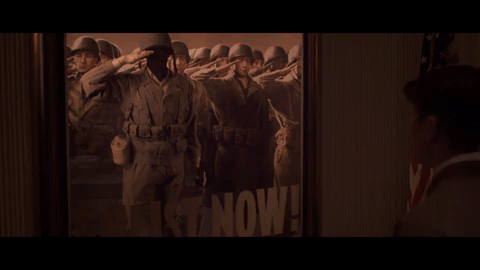
Well, I was wrong.
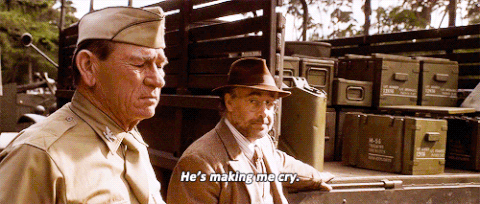
Just like the character played by academy award-winning actor Tommy Lee Jones was shown that brawn isn’t the only thing that matters, I’ve come around to Evans as he grew splendidly into this role. In fact, I actually really like Captain America now, and watching The First Avenger again, I can’t really see why I ever had such a problem with it.
I will allow one caveat to that statement: there’s nothing very special about the plot. But who cares? Plot, shmlot! Any plot can be a good movie; a great one, even! Not that I’ve been great about this so far anyway, but I’m going to ignore the plot for the most part here.

Now, let me tell you about what the kids did cook up for this one: vibes. Do you love WWII movies? Have you already seen them all? (No, you really haven’t…) Are you desperate for some new WWII content, but also don’t want WWIII? Perfect!
Captain America is like the movie version of a remix. It’s got all of the best elements of a classic WWII movie, but then riffs off of these to do cool shit like have a guy turn some nazis to powder and having Captain’s BFF fight a mech suit dude.
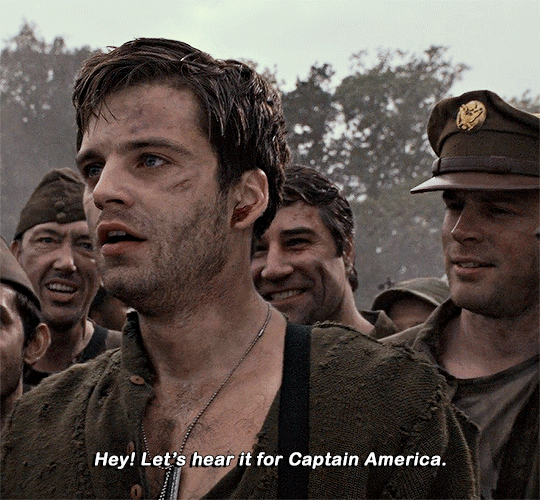
Then you have other cool things like Steve and Bucky showing physical affection (hugging, pats, etc.)
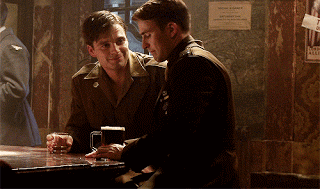
a woman being charge
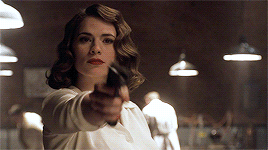
and a diverse group of support soldiers.
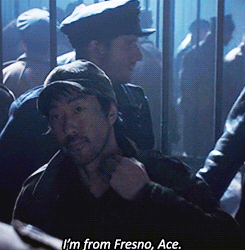
It’s like a WWII movie, but with just enough tweaking to make it more modern without losing the charm that only the triumph over Nazis can achieve.

There were also odd references to other movies throughout, which were ultimately funny easter eggs. Like when Tommy Lee Jones’ character is trying to catch a plane and pushes the big red button.
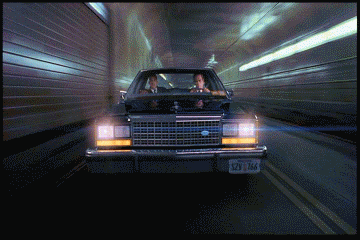
Other than the modern riff on WWII movies, Captain America doesn’t have much else that makes it stand out. Don’t get me wrong; it has great visuals, awesome weaponry, cool fight scenes, and a villain death scene worth revisiting, but overall it’s fairly predictable. However, here are some more caveats: the villain death and of course the post-arctic crash scene.
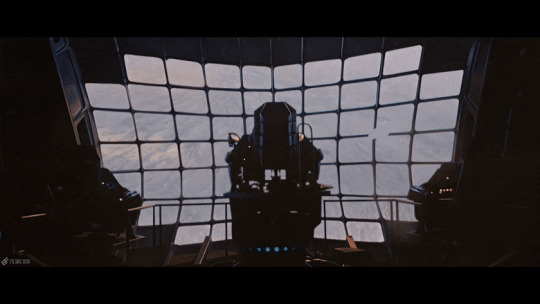
So Captain America lost this fight, right? He certainly didn’t defeat Red Skull and it’s debatable whether he could have. I think if movies weren’t skewed to let the hero win all the time, Captain would not have been able to defeat Red Skull, even without the tesseract. But, put all this aside because this scene is way more horrifying now that we know what the hell is happening. Because Red Skull isn’t just dying.
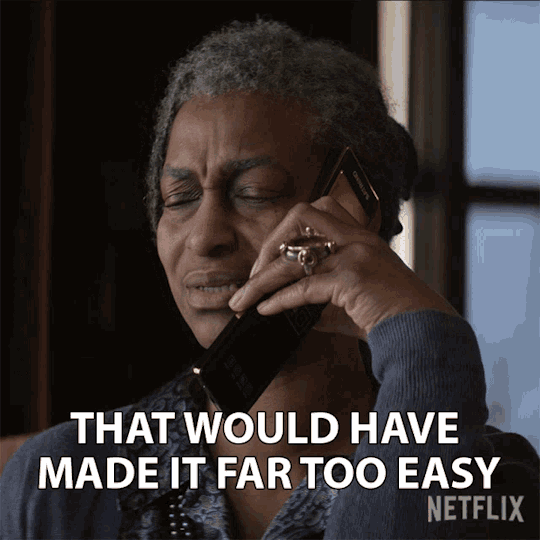
His soul is being ripped from his body to be transported across space into eternal servitude to the soul stone.
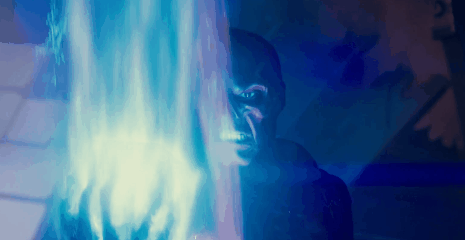
And the scene is SO SLOW. Omg, we’re watching this guy get eviscerated by a magic space rock, but what we think we’re seeing is just some guy get turned into light by a glowy cube.
But that’s what Captain America is; turning the awfulness of war into cool visual effects! Like the guy on the plane who just turns into red powder when he slips off.

Just kidding, that wasn’t powder — it was CG! (or something, idk; don’t fact check me, please)
And then there’s the end scene. This is my favorite part of the movie, and one of my favorite Marvel moments overall.
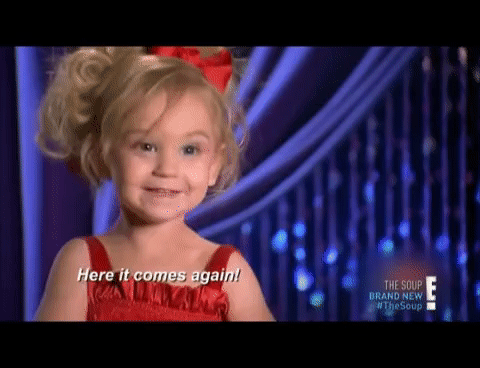
I love that the baseball game gives it away. I really, truly love that the illusion is instantly broken and the fact that it’s broken by a background accessory, not even by anything especially well hidden or a person mis-speaking; just something absolutely mundane. Steve Rogers isn't some Sherlock-style sleuth, he's just a lucky kid from Brooklyn who went to a baseball game one day in the 40's.
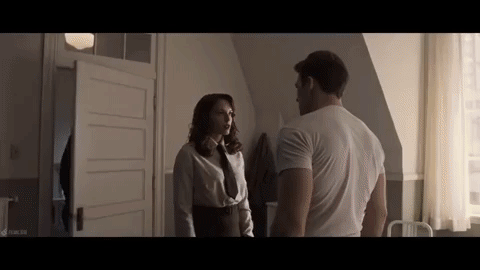
And Captain America is ready; he hits the ground running, literally. Then Nick Fury shows up and somehow the camera manages to sink Steve so deep into Times Square, despite the fact that he’s completely surrounded by half a dozen black SUVs, which almost certainly were drawing more attention than anything the camera is focused on. What the camera is focused on is what Steve is focused on. And what a fucking good boy too; he sees he’s in NYC and that’s enough to calm him down…phew, America. He takes everything so well once he gets a good look around!
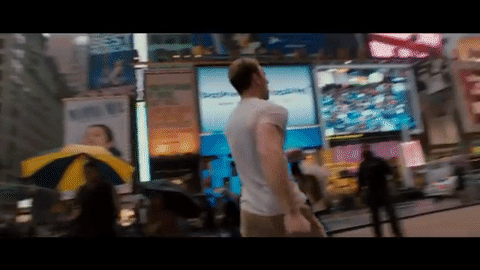
I think this scene says more about Captain America than any other scene. Anyone could become a super soldier good guy; hell, Bucky does it for a second and then Sam Wilson does too. In this final scene, we see just how resilient Steve really is. He’s being told that everyone he knows is old or dead, he has nothing, he’s in the future, and they need him because shit is about to go down, and he just…goes with it?
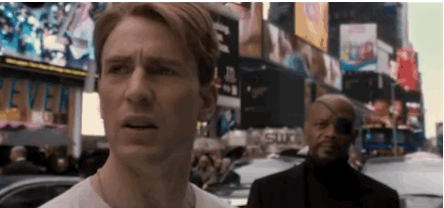
He obviously seems a little flustered, but overall he’s super calm and we all know he goes on to stay positive, focus on the fact that he’s in the future (which is always cool [do not chime in, 40K]), and continue to prioritize protecting people!
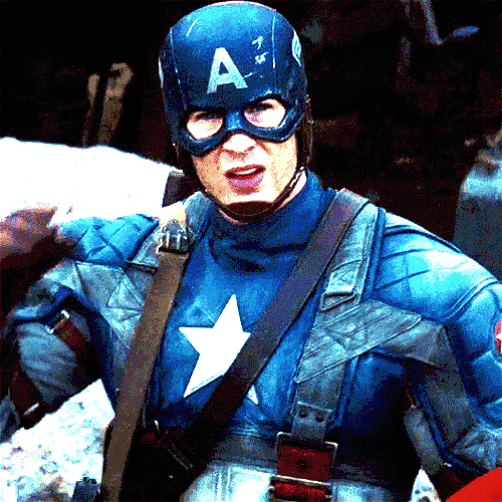
Up next, finally, is the first avengers movie!! I fucking love crossovers, so this is going to be fucking awesome. I can’t wait!!

#captain america#captain america the first avenger#the first avenger#marvel#mcu#marvel rewatch#ww2 movies#bucky barnes#avengers
3 notes
·
View notes
Photo

The link.
With the (virtual) BAFTA Television Craft Awards this Friday evening and Milk’s work on Good Omens up for an award in the special, graphic and visual effects category, our Emmy Award-winning VFX Supervisor Jean-Claude Deguara (AKA ‘JC’) revisits his best moments from the project.
“Making the VFX for Good Omens was one of the most enjoyable projects I’ve ever been part of. It’s not often you get to create VFX in a comedy context and we absolutely loved the opportunity to help bring to life (author and showrunner) Neil Gaiman and (director) Douglas Mackinnon’s vision for Good Omens and to honour the wonderful imagination of Terry Pratchett. (Good Omens was adapted for the screen by Neil, from his comedy novel co-written with Terry in 1990).
It’s tricky to say which was the most memorable from our list of creative briefs….to create a 400 foot giant Satan that has to burst out of the tarmac on an airfield; to recreate an alien spaceship with lolly sticks for legs, based on the drawings of Douglas’ 10 year old daughter; to work out how to visually show David Tennant’s demonic character Crowley travelling through the internet in pursuit of another demon or to fill a call centre with maggots!?!
As we broke down the scripts with Neil and Douglas in the early days of the project, it was clear the challenge was going to be the sheer variety and volume of the VFX work – 650 shots across six episodes – added to a fast 5 month post production turnaround with a VFX crew of 60!
Many of our bigger VFX features like Satan and the Kraken, only appear once in the entire series, as the story moves swiftly towards the Apocalypse (which has to be stopped by tea time!); so we had to strike a really careful balance between delivering impact, yet ensuring they were grounded in reality and so immediately recognisable.
Having continuous access to Neil throughout production and post was brilliant – he would often quote directly from the book to guide us creatively as we developed concepts. There was no question that couldn’t be answered! You don’t often get that level of detail when you’re developing VFX.
We created everything from creatures (a Hellhound; a demon and a snake as well as Satan and the Kraken) to environments (Heaven – which was a penthouse with views of major world landmarks and a busy Soho street); to feathered wings and a whole range of effects work including setting the M25 on fire!
But my favourite part of all the work we created was the beautiful digital Bentley that you see the demon Crowley speeding around London in. Crowley had to drive it through ‘hell fire’ on the M25 when it car catches fire and burns continuously as he heads towards the site of Armageddon for the climax of the story.
The production located a real Bentley 3.5 Derby Coupe Thrupp & Maberly 1934 and we modelled it in intricate detail to create a CG asset that would hold up in a range of full screen shots. One of the most brilliant moments for me and my crew was when the production brought the Bentley to our studio in Fitzrovia one day, so that they could see it in close up detail, to touch and feel it for the ultimate reference.
We’re really excited to have received a BAFTA TV Craft nomination for Good Omens and I’m incredibly proud of every member of our talented team and all the hard work they put in.
Congratulations too, to our partners in crime Real SFX and Molinare’s colourist Gareth Spensley – who we share the nomination with.
Watch our VFX reel here…
2K notes
·
View notes
Text
Harry Styles’ “Adore You” Is Everything a Music Video Should Be (Including Underappreciated by The VMAs)
youtube
KSD NOTE: there is a mention of suicide in regards to the beginning of Adore You.
On November 18, 2019, a website promoting a mysterious place called Eroda (“No Land Quite Like It”) arrived on the internet. Two days later, the official Twitter account for this fictional frown-shaped island began teasing local seaside attractions. You may have missed it, depending on which corners of the internet you choose to lurk, but not if you were a Harry Styles fan, a group that went into pure overdrive trying to figure out what it all meant.
I, for one, missed it at the time. I was unaware this account was cryptically quote tweeting fans as they tried to piece together what was happening, what it meant, and what it could be connected to (Greek Mythology and Lost were a couple of theories posed in comments, Twitter threads, and Reddit). Meanwhile, the Columbia Records marketing department had been hard at work for months, devising this specific and highly-detailed campaign around the music video for Styles’ second single, “Adore You” from his second solo album, Fine Line, ever since he shot the video in Scotland in August 2019 (Eroda = Adore backwards — clever!).
But it was all leading up to the morning of Friday, December 6 when the video was released, one week before the full-length album arrived. Up until that point, I had never seen an entire Harry Styles music video, but what happened next was inevitable. Somehow, as a self-proclaimed boy band scholar, I had never paid much attention to One Direction. I kept a distant eye on Styles since they disbanded, intrigued by the decisions he was making in his solo career. But I hadn’t yet realized I’d been in the ring all throughout the fall of 2019, fighting to resist the inevitable fascination that awaited. First came the jab of Rob Sheffield’s Rolling Stone profile, followed by the cross of “Lights Up”, a song that cracked my Top 20 most listened to songs of the year despite being released just two months before Spotify so thoughtfully compiled that personalized playlist. Then there was the hook of his SNL hosting stint in November (and bless you Bowen Yang for that Sara Lee sketch), which then leads us to the “Adore You” video, the uppercut and ultimate TKO. I surrendered in what felt like a near instant. I was now a Harry Styles fan. (If we’re following this analogy, I sat up to spit out some blood after seeing that cover of “Juice” before my head quickly hit the mat again with a loud thud).
Maybe it’s not quite remarkable that I took time out of a Friday morning to watch a music video, but that I sat at my desk, in an office, with other people around (back when we did those kinds of things) and proceeded to wipe away a few tiny tears from under my eyes by the end of it, was an experience I had not been through… maybe ever? In a world of lyric videos and TikToks, actual, thoughtful, impactful music videos with a full (and sweet!) story are about as rare as a glowing and growing fish these days.
Ultimately, “Adore You” does everything a music video should do. In nearly eight minutes, this video uses excellent visual effects in a cool and interesting way, tells a compelling and heartfelt story, is anchored by an irresistible leading man and an adorable sidekick, is backed up by the catchiest song you could ever dream of, and culminates with a touching and hopeful ending. It’s a treat for the eyes and the ears and the soul. It’s innovative and the kind of thing that begs you to watch it more than once to catch all the details (and yes, I do tear up every time).
So one would think that an award show with the specific purpose of celebrating this type of creativity would be extra sure to nominate such a charming and effective clip, but alas, “Adore You” was overlooked in the MTV Video Music Awards main categories this year. Of course, some could argue that that fact only adds to the video’s credibility but I’ll do my best to not be that petty as I’m still rooting for it to win in the three technical categories where it picked up nominations: Best Visual Effects by Mathematic, Best Art Direction by Laura Ellis Cricks, and Best Direction by Dave Meyers, who remains one of the most inventive and influential directors of all time and whose videos with artists such as Missy Elliot, Pink, and Kendrick Lamar have been racking up nominations for nearly 20 years now. He also saw four other videos he directed get recognized this year: Normani’s “Motivation” (Best Chorography), Travis Scott’s “Highest in the Room” (Best Hop Hop and Best Visual Effects), Anderson .Paak’s “Lockdown” (Video For Good), and Camila Cabello feat. DaBaby’s “My Oh My” (Best Cinematography).
But I reached out to Meyers to specifically ask about the intricate details of “Adore You” and how it all came to be; how he captured such a vibe with the overcast and dreary weather, mixed so wonderfully with the charming oddities of the people that make up this world of Eroda. In addition to directing the video, he also co-wrote the story with Chris Shafer and said, “It’s the first idea that popped to mind after the first listen to the song, and the first idea I pitched to Harry. It was a story that underscored my understanding of what Harry stood for and felt it was necessary to tell it as a narrative to convey his optimism.”
The extended version of the video starts with a two-and-a-half-minute introduction to the world of Eroda, narrated by Rosalia. This includes the “peculiar” people and their professions on the island, meeting The Boy (Styles) and his glowing smile that most people try to avoid, and the quirky superstitions these people continue to live by. “It all served a purpose,” Meyers said of the details. “The superstitions were a set up for how society generally reacts to different things. They fear change or oddity, even if it’s what’s best for them.”
Meyers, however, did not share in that fear, as much of this video provided for interesting and new opportunities he had yet to experience throughout his decades-long career, which he listed off: ”Compelling narrative, CG character, remote location, Scottish crew (nothing phased them),” also noting that all of the other characters in the video were locals as well. So perhaps they were less fazed by the atmosphere across the four-day shoot in Scotland, but as Meyers recalled, the “weather was nuts. It rained every 20 minutes, then the sun, then cloud over.”
However, it’s likely that Mother Nature is also a Styles fan, as Meyers recalled, “I seem to remember going up on the hill for Harry’s picnic with the fish and being worried that it was so gloomy. By the time we came to shoot, the sun came out. And then the sun went away as soon as the scene was over. Similarly, we had the worst storm when Harry was contemplating suicide at the start. Pouring rain, drenching him. So I guess in that sense it was fun watching how Scotland provided a backdrop for the emotions we were after.”
And hey, at least they had the weather on their side to add to the mood while shooting the video, as one of their main characters, well, didn’t exist. “It was very odd shooting with no fish,” Meyers admitted. “But was quite rewarding later seeing it dropped in and making empathic sense to the story we were after.”
Of course, the main character they did have on hand is an awfully useful and appealing one at that. Fans became enamored with the moment Styles uses the back of his hand to check the temperature of a coffee pot before dumping the fish inside the water so it could stay alive. I asked Meyers about this particular moment and he said, “The problem we had was apparent when Harry ran in and threw the fish in the pot. We all sorta felt — well, what if it was hot? So I believe Harry improvised that as a solution and we felt it was perfect for the character’s sensitivity and consideration for this poor fish.” And that’s not the only nice thing he does for his fish friend — he also serves him a tiny taco! “The taco was a whimsical way to express friendship between Harry and the fish,” Meyers offered. It looked pretty tasty, too.
The entire video serves as a showcase for what Styles does best and what makes him such a unique artist: his music, his acting, and his charisma, which Meyers knew would offer him a lot to work with. “Harry is a leading man. I felt that from my first meeting and wanted to play with his wonderful range of emotions. So finding a story with a real character arc was part of my focus in building this world.” Meyers described working on “Adore You” as an “all-around memorable shoot: awesome location, lovely Harry, compelling story, great effects, and… it worked.”
It did. And it was a risk: a video this complex and detailed (and one has to assume, costly), attached to a marketing campaign that proved to be even more involved, still came with no guarantee that the fans wouldn’t shrug it off. But as Manos Xanthogeorgis, SVP of Digital Marketing & Media at Columbia Records told Billboard last year, “When you have a video and a piece of art at such a level, it’s an incredible challenge for the rest of the team to build a campaign at that same level of artistry and creativity.” Oh, and that was only step one, as the marketing team engaged in “real-time marketing” with fans online, ensuring they would continue to remain engaged by dropping clues and clips in the lead-up to the video premiere and subsequently the album. “This whole campaign was around mystery and sometimes mystery is more powerful than knowledge,” Xanthogeorgis said. The Twitter handle has remained active throughout 2020, used as a continual marketing tool for Styles’ next videos including the Meyers-directed “Falling” and this summer’s hit, “Watermelon Sugar.”
With that kind of fan engagement, “Adore You” seemed like a no-brainer for the fan-voted categories of the VMAs this year, as they surely would’ve turned out to vote just as feverishly for this video as they did when searching for clues (about a made-up island, at that!). But hey, maybe MTV was just not interested in massive fan engagement this year — after all, it’s not like everything Styles does, including growing freakin’ facial hair, has the internet in a tizzy for weeks. Ultimately, as the impact of music videos (and certainly the ceremony celebrating them) continues to lose relevance, the disregard of this specific project simply feels like a missed opportunity to acknowledge a rare achievement in the art form.
While Meyers was sure to describe his inclusion in the VMA nominations this year as “lovely and flattering” (and he better have a moonperson in his possession this time next week, MTV!) it’s still puzzling why “Adore You” wouldn’t be included in the big categories, considering Styles is squarely within their demo, at the very least. That “Adore You” is also a technical and storytelling masterpiece, as well as a full moment that was used as inspiration both for the experience online and in-person at the Fine Line Spotify listening party last December, that also comes packed with one of the most enthusiastic groups of fans around, well, that should have had the entire network drooling.
Of course, some of this can simply be chalked up to a perfect storm. As far as his singles go, “Lights Up” was a nice appetizer, but “Adore You” remains the delicious entree (you already know what’s for dessert). “Adore You” is a perfect pop record if I’ve ever heard one (and I have) and deserved a special video. A Chris Isaak “Wicked Game” sexy vibe wasn’t going to work here. The song tells the story of such passionate, pure, and heartachingly naive and innocent love that it almost had to be directed toward a non-human being. Instead, Styles chose to inject those same carefree, sweaty, sticky, delicious, whimsical beach vibes into the “Watermelon Sugar” clip, which was the right choice, and not just for the summertime season (MTV has since added the Song of Summer category to the VMAs and included “Watermelon Sugar”).
But it’s “Adore You” that has melodies that bring a smile to the faces of babies, get your toes tapping even when you hear it in the dentist’s chair, and likely has my neighbors rolling their eyes when I sing along to it in the shower. The song is so simple it’s deep, a theme reflected in the video, as is the central reminder to help and care for others, a thoroughly 2020 message.
However, not all is lost. Both “Adore You” and “Watermelon Sugar” continue to rack up major spins at radio with the latter hitting number one on the Billboard charts earlier this month. Grammy voting kicks off at the end of September and Academy members should take note. Not only is Fine Line more than worthy of being acknowledged, but having Styles on hand to potentially collect trophies and perform is in your best interest when it comes to viewers and online chatter. Do not wait to take him seriously. This is the album, this is the time. Prove that you aren’t a bunch of stodgy old white men who think he’s just for teen (and um, thirty-something) girls, but that you understand the music he enjoys, is inspired by, and subsequently makes, is the same rock music you appreciate as well. An artist like Styles can be both of those things at the same time, and really, the best of both worlds. Give the album a listen, and then one more to let it all sink in. If you have not yet succumbed to the force that is Harry Styles fandom, I truly can’t recommend it enough — and please know that it will get you eventually.
Source: Decider.com
114 notes
·
View notes
Link
On November 18, 2019, a website promoting a mysterious place called Eroda (“No Land Quite Like It”) arrived on the internet. Two days later, the official Twitter account for this fictional frown-shaped island began teasing local seaside attractions. You may have missed it, depending on which corners of the internet you choose to lurk, but not if you were a Harry Styles fan, a group that went into pure overdrive trying to figure out what it all meant.
I, for one, missed it at the time. I was unaware this account was cryptically quote tweeting fans as they tried to piece together what was happening, what it meant, and what it could be connected to (Greek Mythology and Lostwere a couple of theories posed in comments, Twitter threads, and Reddit). Meanwhile, the Columbia Records marketing department had been hard at work for months, devising this specific and highly-detailed campaign around the music video for Styles’ second single, “Adore You” from his second solo album, Fine Line, ever since he shot the video in Scotland in August 2019 (Eroda = Adore backwards — clever!).
But it was all leading up to the morning of Friday, December 6 when the video was released, one week before the full-length album arrived. Up until that point, I had never seen an entire Harry Styles music video, but what happened next was inevitable. Somehow, as a self-proclaimed boy band scholar, I had never paid much attention to One Direction. I kept a distant eye on Styles since they disbanded, intrigued by the decisions he was making in his solo career. But I hadn’t yet realized I’d been in the ring all throughout the fall of 2019, fighting to resist the inevitable fascination that awaited. First came the jab of Rob Sheffield’s Rolling Stoneprofile, followed by the cross of “Lights Up”, a song that cracked my Top 20 most listened to songs of the year despite being released just two months before Spotify so thoughtfully compiled that personalized playlist. Then there was the hook of his SNL hosting stint in November (and bless you Bowen Yang for that Sara Lee sketch), which then leads us to the “Adore You” video, the uppercut and ultimate TKO. I surrendered in what felt like a near instant. I was now a Harry Styles fan. (If we’re following this analogy, I sat up to spit out some blood after seeing that cover of “Juice” before my head quickly hit the mat again with a loud thud).
Maybe it’s not quite remarkable that I took time out of a Friday morning to watch a music video, but that I sat at my desk, in an office, with other people around (back when we did those kinds of things) and proceeded to wipe away a few tiny tears from under my eyes by the end of it, was an experience I had not been through… maybe ever? In a world of lyric videos and TikToks, actual, thoughtful, impactful music videos with a full (and sweet!) story are about as rare as a glowing and growing fish these days.
Ultimately, “Adore You” does everything a music video should do. In nearly eight minutes, this video uses excellent visual effects in a cool and interesting way, tells a compelling and heartfelt story, is anchored by an irresistible leading man and an adorable sidekick, is backed up by the catchiest song you could ever dream of, and culminates with a touching and hopeful ending. It’s a treat for the eyes and the ears and the soul. It’s innovative and the kind of thing that begs you to watch it more than once to catch all the details (and yes, I do tear up every time).
So one would think that an award show with the specific purpose of celebrating this type of creativity would be extra sure to nominate such a charming and effective clip, but alas, “Adore You” was overlooked in the MTV Video Music Awards main categories this year. Of course, some could argue that that fact only adds to the video’s credibility but I’ll do my best to not be that petty as I’m still rooting for it to win in the three technical categories where it picked up nominations: Best Visual Effects by Mathematic, Best Art Direction by Laura Ellis Cricks, and Best Direction by Dave Meyers, who remains one of the most inventive and influential directors of all time and whose videos with artists such as Missy Elliot, Pink, and Kendrick Lamar have been racking up nominations for nearly 20 years now. He also saw four other videos he directed get recognized this year: Normani’s “Motivation” (Best Chorography), Travis Scott’s “Highest in the Room” (Best Hop Hop and Best Visual Effects), Anderson .Paak’s “Lockdown” (Video For Good), and Camila Cabello feat. DaBaby’s “My Oh My” (Best Cinematography).
But I reached out to Meyers to specifically ask about the intricate details of “Adore You” and how it all came to be; how he captured such a vibe with the overcast and dreary weather, mixed so wonderfully with the charming oddities of the people that make up this world of Eroda. In addition to directing the video, he also co-wrote the story with Chris Shafer and said, “It’s the first idea that popped to mind after the first listen to the song, and the first idea I pitched to Harry. It was a story that underscored my understanding of what Harry stood for and felt it was necessary to tell it as a narrative to convey his optimism.”
The extended version of the video starts with a two-and-a-half-minute introduction to the world of Eroda, narrated by Rosalia. This includes the “peculiar” people and their professions on the island, meeting The Boy (Styles) and his glowing smile that most people try to avoid, and the quirky superstitions these people continue to live by. “It all served a purpose,” Meyers said of the details. “The superstitions were a set up for how society generally reacts to different things. They fear change or oddity, even if it’s what’s best for them.”
Meyers, however, did not share in that fear, as much of this video provided for interesting and new opportunities he had yet to experience throughout his decades-long career, which he listed off: ”Compelling narrative, CG character, remote location, Scottish crew (nothing fazed them),” also noting that all of the other characters in the video were locals as well. So perhaps they were less fazed by the atmosphere across the four-day shoot in Scotland, but as Meyers recalled, the “weather was nuts. It rained every 20 minutes, then the sun, then cloud over.”
However, it’s likely that Mother Nature is also a Styles fan, as Meyers recalled, “I seem to remember going up on the hill for Harry’s picnic with the fish and being worried that it was so gloomy. By the time we came to shoot, the sun came out. And then the sun went away as soon as the scene was over. Similarly, we had the worst storm when Harry was contemplating suicide at the start. Pouring rain, drenching him. So I guess in that sense it was fun watching how Scotland provided a backdrop for the emotions we were after.”
And hey, at least they had the weather on their side to add to the mood while shooting the video, as one of their main characters, well, didn’t exist. “It was very odd shooting with no fish,” Meyers admitted. “But was quite rewarding later seeing it dropped in and making empathic sense to the story we were after.”
Of course, the main character they did have on hand is an awfully useful and appealing one at that. Fans became enamored with the moment Styles uses the back of his hand to check the temperature of a coffee pot before dumping the fish inside the water so it could stay alive. I asked Meyers about this particular moment and he said, “The problem we had was apparent when Harry ran in and threw the fish in the pot. We all sorta felt — well, what if it was hot? So I believe Harry improvised that as a solution and we felt it was perfect for the character’s sensitivity and consideration for this poor fish.” And that’s not the only nice thing he does for his fish friend — he also serves him a tiny taco! “The taco was a whimsical way to express friendship between Harry and the fish,” Meyers offered. It looked pretty tasty, too.
The entire video serves as a showcase for what Styles does best and what makes him such a unique artist: his music, his acting, and his charisma, which Meyers knew would offer him a lot to work with. “Harry is a leading man. I felt that from my first meeting and wanted to play with his wonderful range of emotions. So finding a story with a real character arc was part of my focus in building this world.” Meyers described working on “Adore You” as an “all-around memorable shoot: awesome location, lovely Harry, compelling story, great effects, and… it worked.”
It did. And it was a risk: a video this complex and detailed (and one has to assume, costly), attached to a marketing campaign that proved to be even more involved, still came with no guarantee that the fans wouldn’t shrug it off. But as Manos Xanthogeorgis, SVP of Digital Marketing & Media at Columbia Records told Billboard last year, “When you have a video and a piece of art at such a level, it’s an incredible challenge for the rest of the team to build a campaign at that same level of artistry and creativity.” Oh, and that was only step one, as the marketing team engaged in “real-time marketing” with fans online, ensuring they would continue to remain engaged by dropping clues and clips in the lead-up to the video premiere and subsequently the album. “This whole campaign was around mystery and sometimes mystery is more powerful than knowledge,” Xanthogeorgis said. The Twitter handle has remained active throughout 2020, used as a continual marketing tool for Styles’ next videos including the Meyers-directed “Falling” and this summer’s hit, “Watermelon Sugar.”
With that kind of fan engagement, “Adore You” seemed like a no-brainer for the fan-voted categories of the VMAs this year, as they surely would’ve turned out to vote just as feverishly for this video as they did when searching for clues (about a made-up island, at that!). But hey, maybe MTV was just not interested in massive fan engagement this year — after all, it’s not like everything Styles does, including growing freakin’ facial hair, has the internet in a tizzy for weeks. Ultimately, as the impact of music videos (and certainly the ceremony celebrating them) continues to lose relevance, the disregard of this specific project simply feels like a missed opportunity to acknowledge a rare achievement in the art form.
While Meyers was sure to describe his inclusion in the VMA nominations this year as “lovely and flattering” (and he better have a moonperson in his possession this time next week, MTV!) it’s still puzzling why “Adore You” wouldn’t be included in the big categories, considering Styles is squarely within their demo, at the very least. That “Adore You” is also a technical and storytelling masterpiece, as well as a full moment that was used as inspiration both for the experience online and in-person at the Fine Line Spotify listening party last December, that also comes packed with one of the most enthusiastic groups of fans around, well, that should have had the entire network drooling.
Of course, some of this can simply be chalked up to a perfect storm. As far as his singles go, “Lights Up” was a nice appetizer, but “Adore You” remains the delicious entree (you already know what’s for dessert). “Adore You” is a perfect pop record if I’ve ever heard one (and I have) and deserved a special video. A Chris Isaak “Wicked Game” sexy vibe wasn’t going to work here. The song tells the story of such passionate, pure, and heartachingly naive and innocent love that it almost had to be directed toward a non-human being. Instead, Styles chose to inject those same carefree, sweaty, sticky, delicious, whimsical beach vibes into the “Watermelon Sugar” clip, which was the right choice, and not just for the summertime season (MTV has since added the Song of Summer category to the VMAs and included “Watermelon Sugar”).
But it’s “Adore You” that has melodies that bring a smile to the faces of babies, get your toes tapping even when you hear it in the dentist’s chair, and likely has my neighbors rolling their eyes when I sing along to it in the shower. The song is so simple it’s deep, a theme reflected in the video, as is the central reminder to help and care for others, a thoroughly 2020 message.
However, not all is lost. Both “Adore You” and “Watermelon Sugar” continue to rack up major spins at radio with the latter hitting number one on the Billboard charts earlier this month. Grammy voting kicks off at the end of September and Academy members should take note. Not only is Fine Line more than worthy of being acknowledged, but having Styles on hand to potentially collect trophies and perform is in your best interest when it comes to viewers and online chatter. Do not wait to take him seriously. This is the album, this is the time. Prove that you aren’t a bunch of stodgy old white men who think he’s just for teen (and um, thirty-something) girls, but that you understand the music he enjoys, is inspired by, and subsequently makes, is the same rock music you appreciate as well. An artist like Styles can be both of those things at the same time, and really, the best of both worlds. Give the album a listen, and then one more to let it all sink in. If you have not yet succumbed to the force that is Harry Styles fandom, I truly can’t recommend it enough — and please know that it will get you eventually.
112 notes
·
View notes
Link
On November 18, 2019, a website promoting a mysterious place called Eroda (“No Land Quite Like It”) arrived on the internet. Two days later, the official Twitter account for this fictional frown-shaped island began teasing local seaside attractions. You may have missed it, depending on which corners of the internet you choose to lurk, but not if you were a Harry Styles fan, a group that went into pure overdrive trying to figure out what it all meant.
I, for one, missed it at the time. I was unaware this account was cryptically quote tweeting fans as they tried to piece together what was happening, what it meant, and what it could be connected to (Greek Mythology and Lost were a couple of theories posed in comments, Twitter threads, and Reddit). Meanwhile, the Columbia Records marketing department had been hard at work for months, devising this specific and highly-detailed campaign around the music video for Styles’ second single, “Adore You” from his second solo album, Fine Line, ever since he shot the video in Scotland in August 2019 (Eroda = Adore backwards — clever!).
But it was all leading up to the morning of Friday, December 6 when the video was released, one week before the full-length album arrived. Up until that point, I had never seen an entire Harry Styles music video, but what happened next was inevitable. Somehow, as a self-proclaimed boy band scholar, I had never paid much attention to One Direction. I kept a distant eye on Styles since they disbanded, intrigued by the decisions he was making in his solo career. But I hadn’t yet realized I’d been in the ring all throughout the fall of 2019, fighting to resist the inevitable fascination that awaited. First came the jab of Rob Sheffield’s Rolling Stone profile, followed by the cross of “Lights Up”, a song that cracked my Top 20 most listened to songs of the year despite being released just two months before Spotify so thoughtfully compiled that personalized playlist. Then there was the hook of his SNL hosting stint in November (and bless you Bowen Yang for that Sara Lee sketch), which then leads us to the “Adore You” video, the uppercut and ultimate TKO. I surrendered in what felt like a near instant. I was now a Harry Styles fan. (If we’re following this analogy, I sat up to spit out some blood after seeing that cover of “Juice” before my head quickly hit the mat again with a loud thud).
Maybe it’s not quite remarkable that I took time out of a Friday morning to watch a music video, but that I sat at my desk, in an office, with other people around (back when we did those kinds of things) and proceeded to wipe away a few tiny tears from under my eyes by the end of it, was an experience I had not been through… maybe ever? In a world of lyric videos and TikToks, actual, thoughtful, impactful music videos with a full (and sweet!) story are about as rare as a glowing and growing fish these days.
Ultimately, “Adore You” does everything a music video should do. In nearly eight minutes, this video uses excellent visual effects in a cool and interesting way, tells a compelling and heartfelt story, is anchored by an irresistible leading man and an adorable sidekick, is backed up by the catchiest song you could ever dream of, and culminates with a touching and hopeful ending. It’s a treat for the eyes and the ears and the soul. It’s innovative and the kind of thing that begs you to watch it more than once to catch all the details (and yes, I do tear up every time).
So one would think that an award show with the specific purpose of celebrating this type of creativity would be extra sure to nominate such a charming and effective clip, but alas, “Adore You” was overlooked in the MTV Video Music Awards main categories this year. Of course, some could argue that that fact only adds to the video’s credibility but I’ll do my best to not be that petty as I’m still rooting for it to win in the three technical categories where it picked up nominations: Best Visual Effects by Mathematic, Best Art Direction by Laura Ellis Cricks, and Best Direction by Dave Meyers, who remains one of the most inventive and influential directors of all time and whose videos with artists such as Missy Elliot, Pink, and Kendrick Lamar have been racking up nominations for nearly 20 years now. He also saw four other videos he directed get recognized this year: Normani’s “Motivation” (Best Chorography), Travis Scott’s “Highest in the Room” (Best Hop Hop and Best Visual Effects), Anderson .Paak’s “Lockdown” (Video For Good), and Camila Cabello feat. DaBaby’s “My Oh My” (Best Cinematography).
But I reached out to Meyers to specifically ask about the intricate details of “Adore You” and how it all came to be; how he captured such a vibe with the overcast and dreary weather, mixed so wonderfully with the charming oddities of the people that make up this world of Eroda. In addition to directing the video, he also co-wrote the story with Chris Shafer and said, “It’s the first idea that popped to mind after the first listen to the song, and the first idea I pitched to Harry. It was a story that underscored my understanding of what Harry stood for and felt it was necessary to tell it as a narrative to convey his optimism.”
The extended version of the video starts with a two-and-a-half-minute introduction to the world of Eroda, narrated by Rosalia. This includes the “peculiar” people and their professions on the island, meeting The Boy (Styles) and his glowing smile that most people try to avoid, and the quirky superstitions these people continue to live by. “It all served a purpose,” Meyers said of the details. “The superstitions were a set up for how society generally reacts to different things. They fear change or oddity, even if it’s what’s best for them.”
Meyers, however, did not share in that fear, as much of this video provided for interesting and new opportunities he had yet to experience throughout his decades-long career, which he listed off: ”Compelling narrative, CG character, remote location, Scottish crew (nothing fazed them),” also noting that all of the other characters in the video were locals as well. So perhaps they were less fazed by the atmosphere across the four-day shoot in Scotland, but as Meyers recalled, the “weather was nuts. It rained every 20 minutes, then the sun, then cloud over.”
However, it’s likely that Mother Nature is also a Styles fan, as Meyers recalled, “I seem to remember going up on the hill for Harry’s picnic with the fish and being worried that it was so gloomy. By the time we came to shoot, the sun came out. And then the sun went away as soon as the scene was over. Similarly, we had the worst storm when Harry was contemplating suicide at the start. Pouring rain, drenching him. So I guess in that sense it was fun watching how Scotland provided a backdrop for the emotions we were after.”
And hey, at least they had the weather on their side to add to the mood while shooting the video, as one of their main characters, well, didn’t exist. “It was very odd shooting with no fish,” Meyers admitted. “But was quite rewarding later seeing it dropped in and making empathic sense to the story we were after.”
Of course, the main character they did have on hand is an awfully useful and appealing one at that. Fans became enamored with the moment Styles uses the back of his hand to check the temperature of a coffee pot before dumping the fish inside the water so it could stay alive. I asked Meyers about this particular moment and he said, “The problem we had was apparent when Harry ran in and threw the fish in the pot. We all sorta felt — well, what if it was hot? So I believe Harry improvised that as a solution and we felt it was perfect for the character’s sensitivity and consideration for this poor fish.” And that’s not the only nice thing he does for his fish friend — he also serves him a tiny taco! “The taco was a whimsical way to express friendship between Harry and the fish,” Meyers offered. It looked pretty tasty, too.
The entire video serves as a showcase for what Styles does best and what makes him such a unique artist: his music, his acting, and his charisma, which Meyers knew would offer him a lot to work with. “Harry is a leading man. I felt that from my first meeting and wanted to play with his wonderful range of emotions. So finding a story with a real character arc was part of my focus in building this world.” Meyers described working on “Adore You” as an “all-around memorable shoot: awesome location, lovely Harry, compelling story, great effects, and… it worked.”
It did. And it was a risk: a video this complex and detailed (and one has to assume, costly), attached to a marketing campaign that proved to be even more involved, still came with no guarantee that the fans wouldn’t shrug it off. But as Manos Xanthogeorgis, SVP of Digital Marketing & Media at Columbia Records told Billboard last year, “When you have a video and a piece of art at such a level, it’s an incredible challenge for the rest of the team to build a campaign at that same level of artistry and creativity.” Oh, and that was only step one, as the marketing team engaged in “real-time marketing” with fans online, ensuring they would continue to remain engaged by dropping clues and clips in the lead-up to the video premiere and subsequently the album. “This whole campaign was around mystery and sometimes mystery is more powerful than knowledge,” Xanthogeorgis said. The Twitter handle has remained active throughout 2020, used as a continual marketing tool for Styles’ next videos including the Meyers-directed “Falling” and this summer’s hit, “Watermelon Sugar.”
With that kind of fan engagement, “Adore You” seemed like a no-brainer for the fan-voted categories of the VMAs this year, as they surely would’ve turned out to vote just as feverishly for this video as they did when searching for clues (about a made-up island, at that!). But hey, maybe MTV was just not interested in massive fan engagement this year — after all, it’s not like everything Styles does, including growing freakin’ facial hair, has the internet in a tizzy for weeks. Ultimately, as the impact of music videos (and certainly the ceremony celebrating them) continues to lose relevance, the disregard of this specific project simply feels like a missed opportunity to acknowledge a rare achievement in the art form.
While Meyers was sure to describe his inclusion in the VMA nominations this year as “lovely and flattering” (and he better have a moonperson in his possession this time next week, MTV!) it’s still puzzling why “Adore You” wouldn’t be included in the big categories, considering Styles is squarely within their demo, at the very least. That “Adore You” is also a technical and storytelling masterpiece, as well as a full moment that was used as inspiration both for the experience online and in-person at the Fine Line Spotify listening party last December, that also comes packed with one of the most enthusiastic groups of fans around, well, that should have had the entire network drooling.
Of course, some of this can simply be chalked up to a perfect storm. As far as his singles go, “Lights Up” was a nice appetizer, but “Adore You” remains the delicious entree (you already know what’s for dessert). “Adore You” is a perfect pop record if I’ve ever heard one (and I have) and deserved a special video. A Chris Isaak “Wicked Game” sexy vibe wasn’t going to work here. The song tells the story of such passionate, pure, and heartachingly naive and innocent love that it almost had to be directed toward a non-human being. Instead, Styles chose to inject those same carefree, sweaty, sticky, delicious, whimsical beach vibes into the “Watermelon Sugar” clip, which was the right choice, and not just for the summertime season (MTV has since added the Song of Summer category to the VMAs and included “Watermelon Sugar”).
But it’s “Adore You” that has melodies that bring a smile to the faces of babies, get your toes tapping even when you hear it in the dentist’s chair, and likely has my neighbors rolling their eyes when I sing along to it in the shower. The song is so simple it’s deep, a theme reflected in the video, as is the central reminder to help and care for others, a thoroughly 2020 message.
However, not all is lost. Both “Adore You” and “Watermelon Sugar” continue to rack up major spins at radio with the latter hitting number one on the Billboard charts earlier this month. Grammy voting kicks off at the end of September and Academy members should take note. Not only is Fine Line more than worthy of being acknowledged, but having Styles on hand to potentially collect trophies and perform is in your best interest when it comes to viewers and online chatter. Do not wait to take him seriously. This is the album, this is the time. Prove that you aren’t a bunch of stodgy old white men who think he’s just for teen (and um, thirty-something) girls, but that you understand the music he enjoys, is inspired by, and subsequently makes, is the same rock music you appreciate as well. An artist like Styles can be both of those things at the same time, and really, the best of both worlds. Give the album a listen, and then one more to let it all sink in. If you have not yet succumbed to the force that is Harry Styles fandom, I truly can’t recommend it enough — and please know that it will get you eventually.
64 notes
·
View notes
Text
King Kong: Setting the Bar for Special Effects for 75 Years



The story of King Kong is an American creation that is almost a century old. The character was conceived by American film creator Merian C. Cooper back in the early 30s and a movie was made with the best special effects at the time. Over 40 years later, the film was remade with more well known actors, but the focus was again on the giant ape and the special effects used to bring the animal to life. Time passed and once again, almost 30 years after the second attempt, the same movie was remade with many top actors and the best CG effects from one of the top companies in cinema. These films make for a spectacular display of what kind of effects were available at the time through the different ages of Hollywood. Since it is basically the same story three times over, I want to cover the difference as far as effects in each movie to show the development of how actors are able to interact on screen with visual effects:
King Kong (1933):
This was the first depiction of the story and was filled with old school effects like stop motion, miniatures, rear projection, and matte paintings. A giant furry hand was created and put on a crane to make the scenes in which a human woman is interacting with the beast. There weren’t animatronics at the time so any changes with the fingers had to be done manually. The backgrounds with the miniatures were painted on glass to give the background more depth. The stop motion for the prehistoric creatures were done by Willis O’ Brien and created truly lifelike action, a feat that greatly affected his protégé at the time, a young Ray Harryhausen. These were ground breaking special effects for the time and influenced monster movies and science fiction for decades. Audiences loved it, especially since it was shown on opening weekend at Radio City Music Hall for a packed house of 6,200. The film sold out all four nights of its opening and made almost $90,000, a record at the time. It was suggested that the newly formed Academy Awards create a category for special effects to celebrate the movie, but it was denied since special effects were not yet recognized as part of film making.
King Kong (1976):
After 40 years, Michael Eisner, then head of ABC, decided it would be a good idea to remake King Kong. Dino De Laurentiis acquired the rights from RKO and the plan was to make a special effects spectacular, but also have well known actors portray the parts. The got a very young Jeff Bridges, Charles Grodin, and Jessica Lange. A giant animatronic gorilla that was 40 feet tall was made for the film by special effects supervisor Carlo Rambaldi, but it was impossible to work convincingly. In the end, most of the shots of the gorilla that were in the film are of make up artist Rick Baker in a suit crashing around an extensive miniature landscape. The film actually uses the South Tower of the World Trade Center instead of the Empire State Building that was used in the original version. The building in the film was on the original movie trailer, but it was changed in 2001 by request following the terrorist attacks. There were many complaints about the unrealistic gorilla set and the broken robot, but the film was shot in a way that really helped. Cinematographer Richard Kline was nominated for his work at the Academy Awards, but he did not win. The movie did win a special award for Best Visual Effects.
King Kong (2005):
After almost 30 years, yet another remake was made of King Kong, but this one was more in line with the original 1933 film. Special effects had improved greatly with the use of computers and most of the prehistoric monsters were CG. A much more established cast was used than ever before including Jack Black, Naomi Watts, and Adrien Brody. The film was directed by Peter Jackson directly following his work on the Lord of the Rings trilogy. The incredibly talented Andy Serkis provided the ape movements through motion capture that were used for the title character. Some of the best work was done with the interaction between the actors and computer generated creatures. One difference that made this movie stand out as far as the story was an amazing but grotesque scene with the main characters in a pit filled with giant bugs. This film actually one three Oscars for Best Sound Mixing, Best Sound Editing, and Best Visual Effects. This was the most successful version adjusting for inflation, but it was also far and away the most expensive.
#king kong#hollywood#special effects#peter jackson#gorilla#matte painting#animatronics#claymation#carlo rambaldi#empire state building#introvert#introverts
24 notes
·
View notes
Text
Sonehati
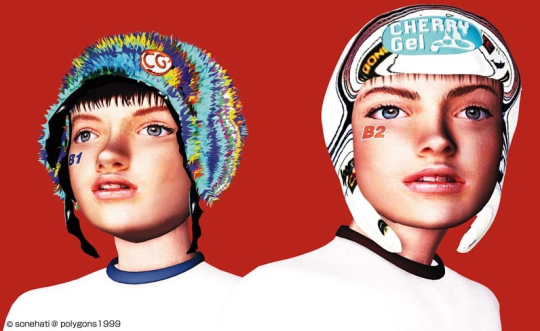
Bio Twins
The truth is that I could write an entire dissertation on Sonehati. I know so much information on him that it has been somewhat difficult to discern what specific element of his work is the most important to me. In the end, I have chosen to discuss his most notable work, the Polygons Album, Sonehati CG Works 1999. This album is a large compilation of Sonehati’s work. Specifically, it contains his preliminary character design renders, stories, and completed compositions. There are even movies, and each of the images featured in the album are already pre-scanned on a CD. This album is likely to be considered his magnum opus, not merely based on the comprehensive and exhaustive curation of his work, but also because it greatly reflects his character design ethos and aesthetic during his prime.
Sonehati is a graphic designer and CG artist. He started to work as a designer in the early 90’s after having gotten a degree in oil painting from Tama Arts University. In 1995, he started up a studio titled “Polygons”, where he and his associates worked to create “computer-generated cute girls” (Virtual Beauties 2020, 148). Some of these characters would go onto be apart of movies and some went onto become apart of games. Polygons is a reference to the fact that digital rendering software contains polygons from which the figure is formed. Sonehati’s specific software is NewTek Lightwave 3D, which I find is somewhat common among 3D artists in Asia. In places like the US, most 3D artists use Blender, Cinema 4D, Modo, or a combination of the three. The use of Adobe PhotoShop is also an almost inherent component of the digital rendering toolkit, and Sonehati does use that too.
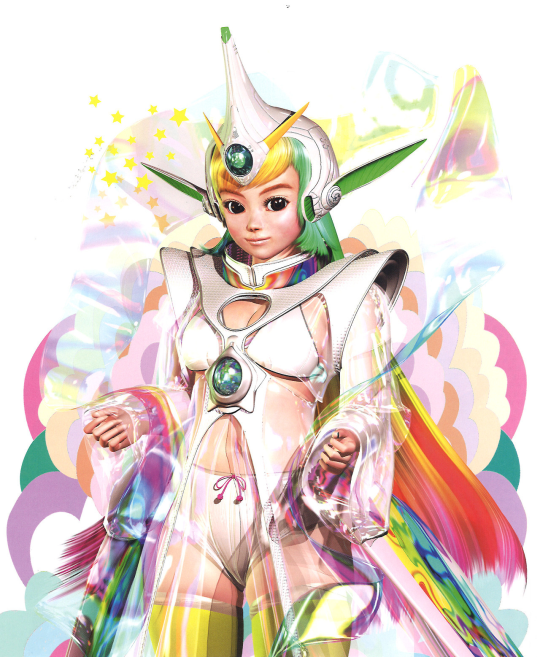
Virtual Beauties 2020, pg 173
Beyond being the name for his studio, “Polygons” is also the same of a self-created race of beings emerging from the virtual world as cybernetic life. Sonehati believed that these virtual characters were more suited for the internet as opposed to mere illustrations or pre-rendered movies (148). From the internet their stories would begin. It’s fitting then, that these “Polygon people” are the focus of the Polygons Album.
There is a thorough cast of figures Sonehati has designed, more than I could ever hope to touch on in this entry. I have elected instead to focus on the characters that I personally find to be the most interesting and most appealing, and who happen to be more famous than the others. Something to keep in mind about these characters though, is that regardless of their differences in identity, they are all made out of polygon skin, are usually quite racially ambiguous (Japanese, Jewish, German, and potentially Italian to be specific), and are incredibly futuristic. I believe that Yukari of the Copyright Guild is the best first example of this.
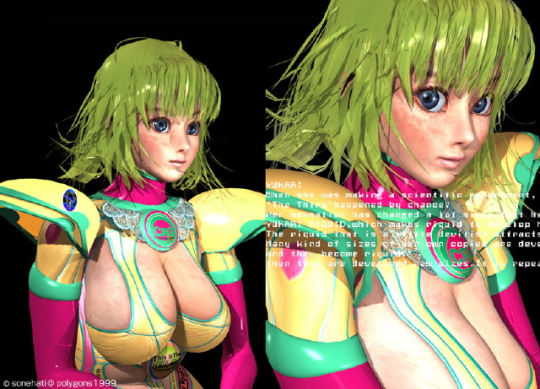
Yukari: When she was making a scientific experiment, “The Thing” happened by chance. Her sensation has changed a lot since that happened.
Scientist Yukari becomes a victim of a freak accident of her own making. “The Thing” is soon revealed by a riquid (render + liquid = riquid), which takes her name (Yukari Riquid), and that continues to make many forms of herself.

Yukari Riquid, which makes riquid to develop her own copies. The riquid that is a little devilish attracts Yukari. Many kind of sizes of her own copies are developed, and they become riquid, then they are developed new sizes. It is repeated.
Truthfully, Yukari has no control over the riquid and its constant replication of herself. But she makes the best of it, eventually forming the Copyright Guild (CRG). She, as the original, is the leader. Together they aim to save the world. “To the Man; to the Earth; to the Right...”
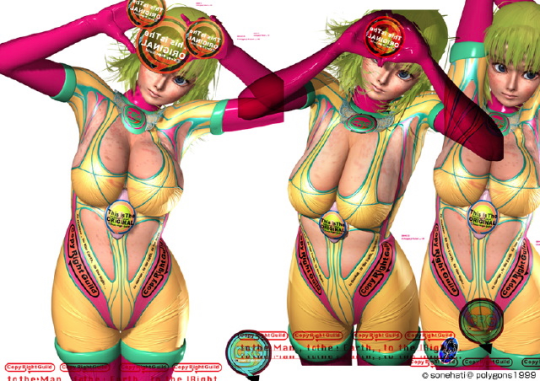
Ichijouji Yukari
Some of the Yukari, such as Hyper Yko., appear to do their own thing and become the most popular of the CRG. Hyper Yko. is so popular that the alternative title for this album is Yko Hyper Album. Some pages of her own notebook are spliced in.
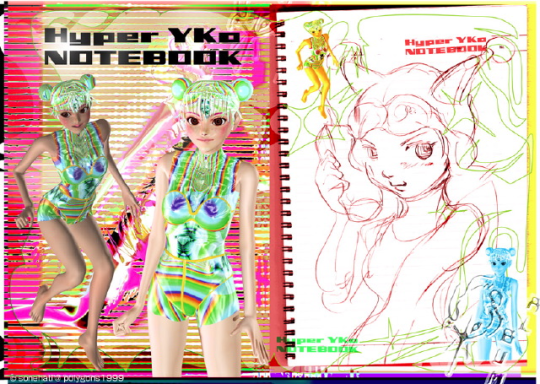
Hyper Yko Notebook
There are so many more characters that I would to discuss, but I will end with the reference of BeamMan, Sonehati’s award-winning character.
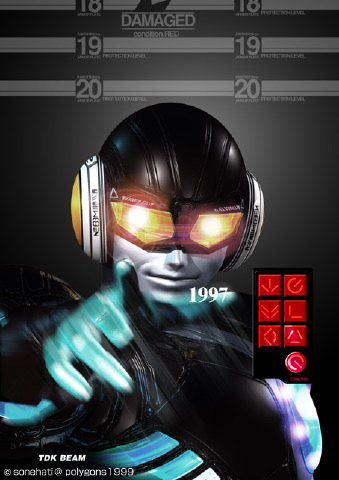
TDK Beam; 1997
I say that BeamMan is award-winning because he appeared on the package design that won Sonehati a prize in London in 1997.
There is something about BeamMan that might draw people to him. On the surface, he seems to be the antagonist the other characters are hoping to defeat.

88880087 (BeamMan)
But then he cries while looking up at the night sky.
In the end, Sonehati’s work explores in great depth the refuge and freedom his characters desire. There are women scientists force to reckon with their sense of identity (Yukari), a teenage girl who doesn’t know her own power (Sayaka 17), and then another that is too afraid to tell her dad that she has claimed hers (Misato Yamaha and then Mega-Misato). They put on power suits and go to battle with an enigmatic force, which is ultimately the Devil Riquid who attaches itself to young girls and women with power. Nearly all of these characters are implanted with Sonehati’s own identity, whether it’s his attraction to women with larger breasts, his affinity for music, and finding his own sense of self on the cusp of the new millenia as a new designer.
Like I said, there is so much more to this book that I could write a book of my own about it. I am very lucky to have obtained the greatest book I have ever owned in my life, in such great condition. It came with the original CD with the scanned images, movies, and even files on how to create the characters yourself using the Lightwave software. This book turned 20 years old in January and I am 21 since February. I believe that the greatest depth to this book outside the self-discovery of young girls and women is that is a relic of its time. In that people my age and even younger were expected to inherit a new and better world at the turn of the century. Obviously this never happened. In seeing young girls and young women fighting the same late adolescent, early adulthood fight, but playing drums during it all or maybe building a better body to fly in, I wonder what would have happened for young people this day if this world wasn’t plunged into chaos in 2001.

Hyper Yko broadcasting from Heisei-X is the most ghostly image of them all. In 1999, the incoming Heisei era was considered a good thing. Now it is known as the “Lost Era”, and Japan is just now getting out of it. Again, I wonder what would have happened for young people of now if the positive predictions of our futures came to fruition.
I plan to write a total analysis of the Polygon Album one day very soon. Until then, as Sonehati would say, “Love and Pixels”. I had a great time writing on this blog and I learned a lot. Thank you!
Works Cited
Sonehati. Polygons Album: Sonehati CG Works 1999. IDG Communications, 1999.
“Virtual Beauties 2020.” Virtual Beauties 2020, Agosto, 2002, pp. 148–173.
65 notes
·
View notes
Text
Iditapod: Making It To the Yukon River
Aliy Zirkle: Basically everyone said, "Don't go." And I was like, Ehhh... I gotta go. I've gotta go see what... there is supposedly a trail, then I've gotta go see if I can do it. And see if I can make a move. No one else wanted to try that.
[theme music plays]
Casey Grove: Welcome to the Iditapod: A podcast about the Iditarod, because nobody else decided to try that, and where we ask ourselves, "What would Aliy Zirkle do?" This is a production of Alaska Public Radio and KNOM Radio in Nome. I am your host Casey Grove. Before we go see if we can do it, here's a word from our sponsor.
[ad plays]
CG: Hey Gang! Happy Friday and welcome to the Yukon River. That's where the front of the pack Iditarod mushers are arriving on Friday. That'll include Aliy Zirkle. Just heard from her. Barring any unforeseen circumstances, she will also be making it to the Yukon today, but it's Girdwood musher and last year's Iditarod runner-up, Nicolas Petit who, again, leads the 2019 Iditarod. Petit's team all, all 14 dogs, was the first to make it to the Yukon River, pulling into Anvik at 4:23 AM, Friday. A quick note on the weather from our trail reporter, Ben Matheson from KMON.
As the race enters its 5th day here, a warm winter storm's expected to drop a few inches of snow and we might see temperatures climb into the mid-30s. That, as we know, can be a little warm for dogs running out there. They tend to slow down when they're warm. And the trail itself, if it gets a bunch of snow on it, will also slow those teams down. The teams approaching the Yukon River include defending champ, Joar Leifseth Ulsem. There has really been a cat-and-mouse game developing between him and Nic Petit, who of course were very close last year. And they've been taking turns in the lead. Ulsom's team had lead through the night going into Friday after passing Petit's between the checkpoints of Iditarod and Shageluk. Petit and Ulsom have been racing near each other ever since hte checkpoint of Ophir, and they've swapped the lead position a few times on Thursday as their rest and run schedules intersected. There will be more shuffling of the leaderboard this weekend. Mushers must take an 8 hour rest at a checkpoint of their choice on the Yukon or in Shageluk, which is pretty close to the Yukon. So Ulsom was first into Shageluk very, very early on Friday morning with 11 dogs. He did stay for that 8 hours, so he has checked that off. As Ben reports, wet snow was falling. Ben talked to Ulsom after he pulled his team over for a nap and a nice big meal. There could have been a gourmet dinner for Ulsom and prize money 25 miles down the trail in Anvik. It looks like Petit has claimed that, but after a hard run through the hilly terrain, Ulsom decided not to pursue that prize.
Joar Leifseth Ulsom: If I were to do it, it'd only be to get the money. It wouldn't be the best thing to do for the dogs.
CG: Petit arrived in Shageluk 36 minutes behind Ulsom, wearing a raincoat, and he was out again within 3 minutes, headed to Anvik.
Nicolas Petit: [Muffled question about the time with dogs barking in the background]
CG: That was Petit urging his dogs on and, for being the first to arrive in Anvik, he wins the First to the Yukon Award, which comes with a 5 course meal prepared by Anchorage's Lakefront Lodge and very experienced chef who is cooking much better food than what these guys have been eating, likely some freeze-dried meals and whatever is being served in checkpoints. This year, the meal that Nic has won includes bison chili, seared scallops, and a pan-fried cinnamon banana, served with vanilla ice cream and warm brandy sauce. Wow. There's also $3,500 in $1 bills and a bottle of champagne. A little dom perignon, I'm told. Obviously, there's a lot of strategizing going on in this race and it's not all about the food. You heard Aliy talking about her drive to push from Ophir to Iditarod. That's where she took her 24. KNOM's Ben Mathison has more from Aliy and more on the strategy as race leaders continue to leap frog each other preparing to make their next move.
BM: After a marathon day on the trail, Aliy Zirkle's team pulled into the ghost town checkpoint of Iditarod, just before 2 AM Thursday. For being the first into Iditarod, Zirkle wins the Dorothy Page Halfway Award and the prize of $3,000 in gold nuggets. But she had to be the first to survive a trail that transitioned from soft snow to bumpy, frozen ground.
Aliy Zirkle: Yeah, those tussocks are hardcore. They're... you shouldn't really mush a sled over them.
BM: Zirkle's jarring trip was on a day so warm that she fed her dogs water from snow that melted from the rooftop of a shelter cabin. She explained her decision to be the first musher who traveled so far before her break.
AZ: I gotta go. I've gotta go see what... there is supposedly a trail from Ophir to Iditarod, so if there's supposedly a trail, then I've gotta go see if I can do it. And see if I can make a move. Um, seemed like no one else wanted to try that.
BM: The race picture is beginning to come into view, as teams surge out of their 24 hour breaks in Takotna and Ophir. Zirkle is racing at the front, but her competition began to pass her Thursday afternoon while she finished her mandatory race. Just after noon, Nic Petit's team flew into the checkpoint with dogs that wanted to run more. He told spectators his reason for heading further up the trail...
Nic Petit: Because it looked like [unintelligible]
BM: With a fresh bale of straw, he drove his well-rested team a few miles further. Good rest is the priority for teams looking to maintain speed through the mid section of the race. On Wednesday afternoon, at the Ophir checkpoint, a few hours into his 24 hour break, veteran Aaron Burmeister woke from a nap and cooked a meal. The soft trails and warm temperatures have required a big effort from his whole team.
AB: There's been a lot of work. I mean, we've all been working together; working together with the dogs, my legs are sore, my body is sore, I don't do much ski poling, but I've been pushing and pumping and running quite a bit.
BM: As mushers head out of checkpoints with freshly rested teams, the race is now on to reach the flat highway of the Yukon River. For KNOM, I'm Ben Matheson in Iditarod.
CG: Mr. Ben Matheson and our other trail reporter, Alaska Public Media's Zachariah Hughes, are turning in great interviews from the trail. We're posting a bunch of those as extended cuts on the podcast bonus editions. Today I'm working on posting an extended version of the interview that you heard parts of today with Aliy, and there's one up right now with Nic Petit in Ophir from Wednesday. Nic was sounding real relaxed there while taking his 24 in Ophir. Talked about his dogs, their breeding line.. and the interview includes a little bit about the two dogs he's running in the lead, at least up to Ophir it was Shoobie and Geoffrey. Couple of half-brothers, he says. And that's a good lead-in to today's listener question.
Megan: Hey guys, it's Megan calling from Ohio. I've really been enjoying the daily podcasts and bonus tracks. Thanks for keeping us connected to this exciting event. My questions are around the order of the dogs within the team. Is it intentional or strategic which dogs are the lead dogs? What are some of the qualities that the mushers look for in the lead dogs? Do they switch up positions within the team? Stuff like that. Thanks so much.
CG: Thanks for that question, Megan, and thanks especially for the fawning praise. We appreciate that. And thanks for listening as well. The short answer is, yes. A dog's position on the team really does matter, but it's not as hard and fast of a rule that a dog always has to pull in the same position. And mushers will tell you that it's important to have multiple dogs that can lead. If you have enough leaders in your team like that. I have to say when you see these really professional looking Iditarod teams, they look pretty orderly. They make their way down the trail. They pass other teams without too much trouble because they've been trained so well and they're just the best dogs for this. I mean, this is the race for them. IF you go out with amateur mushers, the teams maybe aren't as well-trained and that's just the fact of life. If you have more time to work with the dogs to work with the dogs, they're just going to be better at doing this. And the leaders especially may look back. Dogs may look back. They could get jumbled up. They may not pass other teams as smoothly on the trail. So when you see videos of these Iditarod teams just remember that. There's a lot of work that goes into making things run as smoothly as they do. We're gonna have more on lead dogs in just a second from Iditarod champion Libby Riddles and 16 time finisher, Jim Lanier. They were on Alaska Public Media's live call-in show, Talk of Alaska, recorded a couple of days ago. I was lucky enough to be able to join them. Might post the whole thing to the podcast here, not sure if we have the space for that, but we'll find out. But real quick- let's just start with the positions in a dog team. Starting at the sled. You've got your wheel dogs. Those are gonna be your bigger, sorta stronger, bulkier dogs that really break the weight and get the sled moving right away when you need to move. Then you've got a couple, 2-3 rows of team dogs. And then you've got 2 swing dogs up near the front. They're right behind the leaders and you need to train them to be able to make a big arc when they make turns. You don't want them to just cut off and try to run ahead of the leaders at any point. They really do play an important role because the position right behind the leaders and as those leaders make a turn, you want that nice, clean arc sot hat if you're the musher on the sled, you can just whip around the turn instead of just going straight through. So, as promised, here's more from Libby Riddles and Jim Lanier with Talk of Alaska host, and my boss, Lori Townsend, starting things off.
Lori Townsend: Libby, what goes into selecting the dog that is going to be the leader? How do you make that decision?
Libby Riddles: You don't select. They're born or made, but mostly the very best ones just have it in their blood. I mean they rise to the top, you know? It's just like you're the coach and you have to see each dog. What is their best place? And some dogs are full time leaders that could do every day of the Iditarod, and others like to have a break now and then. You know, every dog has a different capacity and some of us are lucky enough to have these just once-in-a-lifetime super dogs like the one that helped me win the Iditarod.
LT: Well, I want to know more about that in a while. We'll talk about that particular race, but Jim, what are your thoughts about that? What are you looking for in a lead dog, and have you had one that really stood out from the others? J
im Lanier: Oh, I've had several. As all of us who've done a lot of mushers, I've done the race a number of times. I guess the one thing you look for is a dog that's aggressive, that wants to lead, that doesn't mind being chased by a big pack of dogs, you know? And one that has assurance that he or she could do it. You don't want them looking back, asking "Hey are we done yet? Can I get a... off..?" you know?
LR: [Asking] "Can I get a snack?" J
L: So those are the things you look for.
CG: So there you have it, that's how you pick a good lead dog. I want to mention too, there's a really cool award in the Iditarod, if you haven't heard this already. It's called the Golden Harness Award. It's for outstanding lead dogs. The Iditarod has the winning musher pick one of their dogs, sometimes it's two. They take a picture of them with this nice wreath of flowers on the dog. I just want to go back and list some of the past golden harness winners. Back in 2010, you had Maple on Lance Mackey's team. 2011, it was two for Snickers and Velvet on John Baker's team. Then 2012, Guinness on Dallas Seavey's team. Tanner in 2013 on Mitch Seavey's team. Beatle, another Dallas Seavey dog in 2014. And then you've got back to back wins of the golden harness award for Reef on Dallas Seavey's team. Pilot for Mitch Seavey in 2017. I think I saw a report that Pilot is out of this year's race and had to be dropped. And then a dog by the name of Russeren on Joar Liefseth Ulsom's 2018 winning team. I guess that stands for "Russian Express". And we will have to see who wins Golden Harness in 2019 when the teams reach Nome sometime next week.
Speaking of major accomplishments, I've been avoiding this beacuse I don't want to admit that there's another Iditarod podcast out there that has been actually in the business longer than us... it's called The Ikidapod, and it's put together by a class in Wisconsin. Elementary School students in Mrs. Treptow's class. They actually have been going for 4 seasons now. This is their fourth season. Here is a little taste... and I am not kidding you, this is the Ikidapod's opening music.
[electronic music plays]
Kid: Hello and welcome to Ikidapod. Season four. We're your hosts for today's pod. Frosty Frost. Today we will be telling you what the Iditarod is....
CG: It's pretty great and a shoutout to Mrs. Treptow's kids and The Ikidapod and congratulations on making it to your fourth season of The Ikidapod. I mentioned Dallas Seavey's name a few minutes ago, with his lead dogs. Of course, the four time champion is not running the Iditarod for the second year in a row. he didn't run last year, amid a dog-doping scandal. Since then, the Iditarod says they've cleared him of any wrong-doing. We covered all of that back in season 2 last year. Especially season 2, episode 2. I would definitely encourage the listeners to go back and listen to the whole season, but if you want to know more about all that, that was covered in season 2, episode 2. Again, Dallas is over in Norway, racing in the Finnmarkslopet. There was a point in last year's Iditarod where Joar was leading the Iditarod, he won of course. And Dallas was running in first place in the biggest race over in Norway. It's actually the longest sled dog race in Europe. It's about 750 miles. And Seavey ended up taking 3rd last year. I guess that wasn't good enough for him. He went back over in Norway and he's going to try again to win that race. Maybe the best way to find out about Dallas's run in the Finnmarkslopet is to follow him on Facebook. He's out there on the social medias and on the internet. Well, everybody that's all we have time for today. Check us out at http://AlaskaPublic.org and http://KNOM.org for more stories and photos. We will continue the Iditapod here over the weekend as the race continues, we've also got daylight savings time changes coming up and some math to do. So, stay tuned for that and more extended interviews from Ben and Zach out in the field. Hopefully Zach's going to figure out his internet issues in Anvik. Can't wait for that. Our theme music is by the band Sassafras. I am your host Casey Grove. Til next time, happy trails! [theme music plays]
1 note
·
View note
Text
more behind the scenes 1997
The caution tape has been removed, and it is safe to explore the uncharted territories of Site B. Learn how Steven Spielberg and the Academy Award®-winning visual effects team of Dennis Muren, Stan Winston and Michael Lantieri combined their skills to bring back to life the most amazing creatures to ever walk the earth. Join the cast and crew on location with an exclusive streaming video presentation on the making of THE LOST WORLD: JURASSIC PARK. Observe the filmmaking process in-depth through a multimedia tour - including script pages, story boards, stills, quicktime movies and more - behind-the-scenes of the creation of two scenes from the movie. Grab you mouse and enjoy. Then check out the Home Video site for information on the upcoming videocassette release of the year's most exciting film.
Back in the summer of 1995 when the word began to circulate that Steven Spielberg was considering directing The Lost World , some had predicted that the Digital Revolution would provide all the tools he needed to create the dinosaur effects for the much-anticipated follow-up to Jurassic Park, which had broken new ground with animated characters generated entirely through sophisticated high-end computer graphics by Industrial Light & Magic.
The mix and matching of ILM's computer animation with the Stan Winston Studio's animatronic dinosaurs had worked to great effect in the first film, but that didn't stop speculation that Spielberg would dispense with mechanical creatures altogether for the sequel, opting to computer generate all of The Lost World 's dinosaurs. "I was very concerned that Steven would go all CG with The Lost World ," Stan Winston admitted. "My thinking is that you have to create characters first and foremost; and then you use whatever technology is best suited to creating the most realistic illusion."
Shortly after initiating the Lost World project, Spielberg informed Winston of his intention to create the movie's dinosaurs in the same way he had for Jurassic Park - by artfully intercutting the mechanical versions with computer animated characters, using the latter for shots requiring multiple characters or more dynamic, full-body action. "Steven wanted to feature some dinosaur characters that were primarily practical," recalls producer Colin Wilson . "I think he felt that there is a rapport and intimacy that develops when they are right there on the set - something that is difficult to achieve when the actors are working against nothing but air or a measuring pole."
As they had for the first film, the designers at the Winston studio adhered closely to paleontological fact - or in the absence of fact, paleontological theory - in their dinosaur renderings and sculptures. Scientific accuracy was ensured for the entire production - as it had been in the original - by the commissioning of paleontologist Jack Horner to act as consultant to the film.
The execution of the computer generated dinosaurs would again be assigned to visual effects supervisor Dennis Muren and a team of artisans at Industrial Light & Magic.
"When we took on Jurassic Park ," Muren noted, "we didn't even know if we could do it; and, as a result, we didn't go into that show confidently or boldly. Going into The Lost World, we knew what was possible, and we were eager to test the limits of the technology and take it to a new level."
Several factors would make the computer animation assignment for The Lost World far more complex than it had been for its predecessor, one of which was the fact that a large percentage of the CG shots would feature not one or two animals, but large groups or even entire herds. Whereas Jurassic Park had only six or seven multiple creature shots, nearly 50% of the shots in The Lost World would feature multiple characters.
"The process begins with shooting live action backgrounds on set and taking precise measurements," explains visual effects producer Ned Gorman. "We bring the plates back to ILM, put them into the computer and create virtual environments into which the animators can place the CG characters. After it's all said and done, we have hopefully got a living, breathing creature looking as though it was actually on the set, responding to Steven's direction."
How successful was the process? "The mechanical dinosaurs are indistinguishable from the CG characters," according to Spielberg.
Special effects supervisor Michael Lantieri had been a key player in providing special effects gags for Jurassic Park as well as physical effects that created the illusion of on-set interaction with the computer animated characters. Ironically, some had seen the emerging computer graphics technologies as the future death knell for the field of mechanical and large-scale effects, since, hypothetically, CG would develop to a point that explosions, rainfall, flying cars and tumbling buildings - all standard effects gags - could be more easily and even more convincingly created digitally in postproduction than they could live on a set.
But Jurassic Park had proven that not only would CG not supplant physical effects work, it would actually engender a whole new effects discipline geared toward effectively placing computer animated characters into their surroundings. Lantieri defines this emerging aspect of his work as "puppeteering the environment."
As pivotal as Lantieri's contributions to Jurassic Park had been, however, they paled in comparison to what was asked of him for The Lost World . "Before we actually started and saw what this movie was going to be," Lantieri says, "I think many of us underestimated it. We'd done the first movie, so we all kind of thought, 'Been there, done that, no big deal.' But before too long we clearly saw that we'd be doing five times the amount of work in this picture than we had for the first one.
"The sequences in this movie were not only bigger," he concludes, "they were tougher and much more complicated."
Of the nine different dinosaur species featured in The Lost World: Jurassic Park, two characters in particular embody the artful combination of animatronic and computer generated technology that has dazzled audiences around the world: the compsognathus (shown below attacking hunter Dieter Stark) and the T-rex, the film's smallest and largest dinosaurs, respectively.
The compsognathus make their big screen debut in the opening encounter with the little girl, setting in motion a series of events that leads Ian Malcolm and the others to Site B. But later in the film there is a much more graphic depiction of the less than 3-feet long compy - with their long necks, flexible forearms and razor-sharp teeth - as the "land piranha" they really are: light, fast, deadly predators that take no prisoners.
In the scene, the compys attack Dieter Stark (Peter Stormare), a cold South African second-in-command big game hunter, who earlier in the film had chastised the chicken-size creatures with an electric prod. It begins with a few compys teasing Stark when he gets separated from the group. Frustrated and confused, Stark wanders further and further from his comrades as the compys follow him in increasing numbers. Soon, completely lost, Stark is surrounded by a swarm of the tiny creatures, observing him with their ritualistic head-bobbing. Rightfully fearing for his life, Stark panics and begins running. When he trips over a log in his path, he is attacked and killed by the dozens of tri-finger clawed hunters who have payback on their minds.
Stan Winston had concerns about the mechanization of the small, dynamic creatures. "It was so different than what was required for the large creatures that it was like going from building an 19,000-pound T-rex to building a watch," Winston recalls.
Winston's primary challenge was to capture movement of the lively creatures -especially the desired quick, birdlike, attack movement. Fortunately, mechanical designer Chris Cowan put Winston's concerns regarding the compys movement to rest when he devised a way to actuate the agile creatures through a combination of cable-controlled servo mechanisms and pneumatics.
To shoot the scene, the Stan Winston Studio's dozen mechanized compys were attached to actor Peter Stormare, then puppeteered from off camera. Full-motion versions of the compys would be inserted by the ILM team through computer animation.
Working with a large number of small, agile dinosaurs moving around each other within a live-action scene, the ILM team of animators essentially drew a path through the live-action scene on their monitors for each specific CG character, and that character would automatically move along that course. After reviewing the shot, the animator could then adjust the creature's course simply by redrawing the path.
Of the nine different dinosaur species featured in The Lost World: Jurassic Park, two characters in particular embody the artful combination of animatronic and computer generated technology that has dazzled audiences around the world: the compsognathus and the T-rex (shown below demolishing gatherer Eddie Carr's vehicle), the film's smallest and largest dinosaurs, respectively.
At the opposite end of the dinosaur evolutionary chain from the compy, the Tyrannosaurus Rex was among the most powerful and terrifying predators ever to walk the earth. Featured previously in Jurassic Park, the T-rex makes its return to the big screen in The Lost World.
The filmmakers always knew they would bring back the T-rex, only this time having a female and a male. (Therefore, new color schemes were devised, making the male hides more colorful than the those of the female and covering the male with battle scars). Together they star in one of the film's biggest and most complex special effects sequences - the pivotal T-rex-versus-the-trailer scene in which the dinosaurs push a conveyance trailer over a cliff and attack a Mercedes M Class all activities vehicle driven by field systems specialist Eddie Carr (Richard Schiff).
In this scene, Ian (Jeff Goldblum) and Sarah (Julianne Moore) are trapped in a communications trailer by two T-rexes - male and female parents looking for their baby, whose broken leg Sarah is attempting to mend. The enormous carnivores, with their powerful hind legs, three-taloned feet and mammoth tail, attempt to push the trailer over the side of a cliff. With Sarah slammed against a window and Ian braced inside, the trailer rolls toward the cliff and dangles over the edge. Eddie arrives on the scene in the nick of time to effect a rescue.
Eddie manages to hook the trailer to the Mercedes, but just as he begins to pull Sarah and Ian from danger, he is viscously yanked from the vehicle by the enraged T-rexes and torn apart like a human wishbone.
The background plates were shot at Patrick's Point State Park, a California coastal wilderness area with bluffs overlooking the ocean and open fields. Because of its size and floor pit, Universal Studios' Stage 27 would serve as the stage match to what was shot at Patrick's Point to simulate the drop shots of the T-rex pushing the trailer toward the cliff's edge and house the giant hydraulic T-rexes.
For the close-ups, the animatronic T-rexes required up to nine operators each to control every inch of the massive beasts. For the facial movements alone, there was a puppeteer with a face gear on, moving his jaw, with someone else working the eyes and eyelids.
When the two T-rexes approach either side of actor Schiff's Mercedes AAV, they are actually doing so on 80-foot-long dolly tracks which runs along each side of the vehicle. These hydraulic mechanisms incorporated into a steel armature were engineered to drive the over 19,000-pound mechanical dinosaur.
These shots were then enhanced by ILM's computer generated images, which were blended in to create the final sequence.
1 note
·
View note
Text
Starry★Sky in Summer -Azusa- 8/23
The day of the Interhigh Tournament is here! Is Azusa truly over his slump? Will Kanakubo deal with the pressure okay? Will Miyaji be Miyaji? Will the bakas be bakas? Let’s find out!
...I do appreciate how the awesome things are happening! Bgm suits the kyudou tournament parts so well. It’s such a spirited little tune, very well done.
Captain Kanakubo and Vice-Captain Miyaji give the team an uplifting speech before they head into the competition, then it’s Tsukiko’s turn.
...which means it’s my third and final time to bemoan that we don’t get one, NOT ONE SHOT of Tsukiko being awesome in her kyudou gi. Come on, guys, one little CG would have been enough. For shame.
Tsukiko x being her awesome damn self is my Starry Sky OTP okay?
Anyway, Tsukiko steps up to take her shot and is focused on it. She wants to do well, not just for herself, but to set up a good momentum for the guys when they enter the team competition. As she centers herself, Azusa’s words of encouragement echo in her head.

“Yahisa-sempai, do your best. I know you’ll do well.”
His encouragement is followed by similar words from Miyaji and Kanakubo, as well as the rest of her teammates. That’s right, she has her team’s full support. My headcannon says that her childhood friends, the student council members, and Haruki-sensei are all there in the audience as well.
Tsukiko takes the shot and make a direct hit. In the end, she performs the best she ever has in competition.

“Yahisa-sempai, you’re guaranteed first place! Congratulations!”
The whole team rushes over to congratulate them and Tsukiko happily thanks them.
Following the girls’ solo competition is the boys’ team competition. The final deciding shot is made by Azusa…

...who makes it with ease.
And so Seigetsu Gakuen, which is a nerd school for nerds and canonically not a strong school for sports (I forget where it’s mentioned but it’s in the official material somewhere) wins the national Interhigh Kyudou tournament like any self-respecting sports anime would end up.
Everyone congratulates Azusa on his shot, to which he says of course he made it, because he’s back to being a cheeky brat. However, when Tsukiko tells him congratulations, he drops that attitude and honestly tells her it’s all thanks to her.
Then…

“Um… after the awards ceremony, do you have a moment?”
Curious, Tsukiko says sure. What could he want?
After the awards ceremony is over and the team has returned to the school, Tsukiko and Azusa meet in the courtyard. Azusa asks if she’ll listen to what he wants to tell her, to which Tsukiko readily agrees. Of course she’ll listen. She’s a little surprised by how serious he sounds and patiently waits for him to start.
Azusa begins to tell her how seeing the passion she and the others on the team had for kyudou had him thinking...while that was the reason he had his slump, it’s also the reason why he fell back in love with the sport himself...and before he knew it, he had fallen in love with her as well.
Wait, what?
He keeps talking before she can quite grasp his meaning.
(he doesn’t outright say it like an I’M IN LOVE WITH YOU confession, but there’s no other way to word it in English without it coming out super awkward and inelegant, and it doesn’t ruin the flow of the conversation so it is what it is)
Azusa feels like he’s gained a lot from joining the team, before he’d even known it. And he wants to keep gaining new experiences through it. He’s realized that learning how to juggle different interests helps him to be a bigger, better person. He’ll prove to her that he can juggle ten, a hundred, even a thousand things…
But at the same time, he’d rather his hands only held dear one thing…
And that’s her.
Okay that’s super sweet.

“I in love with you, Yahisa-sempai.”
He asks her to be his girlfriend, promising that he’s confident he can treat her well.
For the most part, Tsukiko has really only considered him an adorable kouhai up until this point, so she’s understandably surprised by this confession. But she can’t take her eyes off him, and knows in her heart that there’s only one answer she can give…
...it kind of tumbles out of her awkwardly though, telling him she’s very happy to hear him say that.
Azusa asks if he can interpret that the way he wishes to.
Too late, he already has.
Yeah, Tsukiko answers, finally recovering the words, of course he can.
Azusa steps forward and wraps her up in a surprise hug. He warns her to not let her guard down too much just because he’s younger. With that in mind, does she mind if he kisses her?
Look, we all knew from the start that Azusa would be this kind of boyfriend and you really shouldn’t be surprised at his forwardness, Tsukki.

“lol, super passive shoujo protagonists are so cute.”*
(*so very not a proper translation)
He stares her down until…

“See? You’re blushing.”
He leans in for the kiss before she can protest.

In a hushed voice he tells her that she’s the first person he ever truly took an interest in, so he has no plans of ever letting her go.
Pfft. teenagers amirite?
#starry sky#sutasuka#let's play#otome game#kinose azusa#funny how one of the least romantic routes has one of the most romantic confession scenes#like#i jest but#azusa's confession is really sweet#do approve#just a wee bit out of left field-ish#but that's what they sacrificed for the sports anime plot
1 note
·
View note
Text
OPINION: I Don't Know Who'll Win the Anime Awards, But Here's Who Should 2021 The More Correct-er Edition

Ah(hhhhhhh!), the Anime Awards. It comes earlier every year. It was only some 360-ish days ago that Demon Slayer took the coveted title, and I went 0/6 on my predictions for who would win. But as another awards show comes, much like the changing of the seasons, does a whole new collection of hot takes begin to bloom. And oh how I have been taking care of them like my new pandemic succulents (poorly)!!
There's a lot you can say about the last year. There's a lot you can say about the last year in ANIME! But since I don't have a Clubhouse invite yet, you're gonna have to hear about it right here in written form. This is also the only opportunity I have on company time to talk about who should win and who actually should have gotten nominated in the first place, as well as make up my own totally fake awards because this is my article!!
When presented with the likelihood of something being infinitely close to zero, Simon from Gurren Lagann said that means it isn't inherently zero, so as far as he's concerned, that makes it the same as a 100 percent chance. That's the sort of cartoon logic that is very healthy to bring into the real world, as well as guessing who is going to win an awards show, so let's get to it!
1. Best Director: Shingo Yamashita
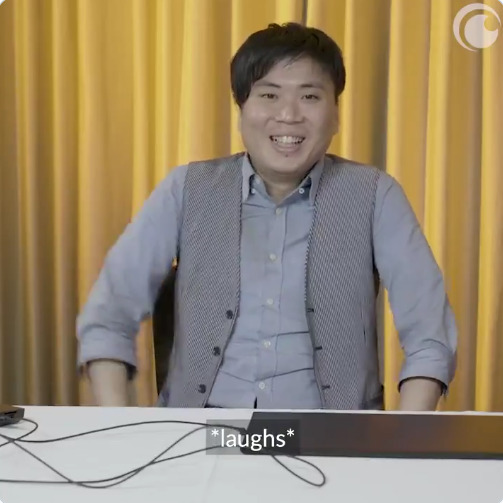
While he is not nominated, Shingo Yamashita has had an incredible year, not only directing two of my favorite openings, but also ones I could consider all-time highs. Simply put, I really like the guy and his art direction, and he always seems to deliver something unique and interesting when he is in the director's chair. Through that unique style, he was able to work with a team of really talented animators to make that statement right from Episode 1. Pay attention to the people in your life who have opinions on the direction of the Naruto vs. Pain fight, but then turn around and talk about how cool the aforementioned openings are.
2. Best Japanese VA Performance: Mamoru Miyano's Kansai Accent
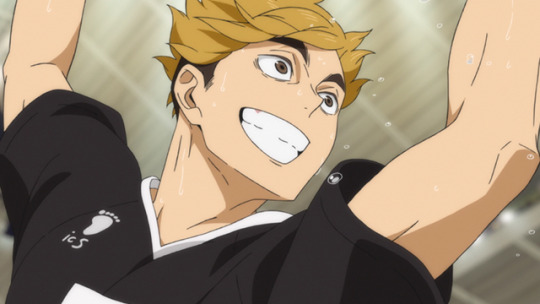
This is a very indulgent choice (well, this whole article is), but out of all the voice actor performances this year, I'm still thinking about Mamoru Miyano's Kansai accent. Playing the volleyball star Atsumu Miya from Inarizaki High in HAIKYU!! TO THE TOP, either Miyano or the people he worked with really made sure to train him to have the thickest Kyoto accent imaginable, and I was enthralled. It's kinda hot? I think Miyano works best when he plays characters with a bit of an edge and goofiness to them (see his performance Kotaro Tatsumi in Zombie Land Saga), so having him star as the eccentric setter was a perfect fit. I do wonder if Atsumu Miya and Kotaro Tatsumi ever met if it would be an unstoppable force/immovable object situation.
3. The "You Were Right" Award: Akudama Drive
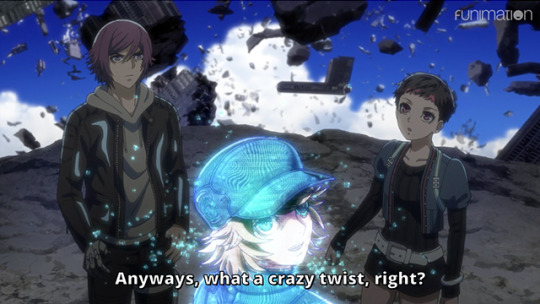
Image via Funimation
This is not a real award in this year's Anime Awards, but I think it deserves mention for a series that was so under-nominated. So, Akudama Drive started last October and everyone was losing it. One person (I think it was our own Adam Wescott) described it as "a show where every episode feels like the season finale." But I continued putting it off. Sure, the first episode has a guy who swings around Osaka like Spider-Man on his motorcycle, but there's no way it could keep up. I also haven't played any Danganronpa, so I wasn't familiar with this sort of Kazutaka Kodaka romp, as his storytelling and style is written all over it. But after the show finished, I went back and gave it an honest shot ... and you were all right! It's really great and doesn't let off the octane at any point! This was definitely one of the strongest series I watched this last year, with its pointed cyberpunk storytelling and a particularly fantastic season finale — which might be my favorite episode. So whatever categories Akudama Drive is nominated in, sure, I think it should win ... wait, it was only nominated for Best Fight Scene!? Anyway, I should have listened to you all sooner. Mr. Kodaka, I'm sorry for doubting you.
4. Best Animation: Beastars
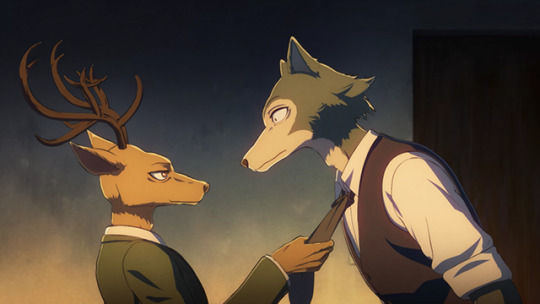
Image via Netflix
As I wrote in our Best of the Decade list last year, Studio Orange's utilization of 3D animation is a treasure to behold and a jewel of the industry. Eiji Inomoto and the staff at Orange are putting out shows that are frankly the gold standard for the form. Beastars is no exception, far exceeding any expectations I had for what an adaptation of Paru Itagaki's animal drama would look like. However, in the case of Beastars, it's not only the CG, but also the multitude of other animation styles the staff integrated throughout the show, and none of those unique styles ever repeats! I think it says a lot for a studio and a show that not only perfects its main style but also includes phenomenal companion pieces that are fantastic on their own. For such drive and direction, and excellence in their field, not only would it be a win for Beastars, but also a win for the everlasting creativity coming out of Studio Orange.
5. Anime of the Year: Keep Your Hands Off Eizouken!
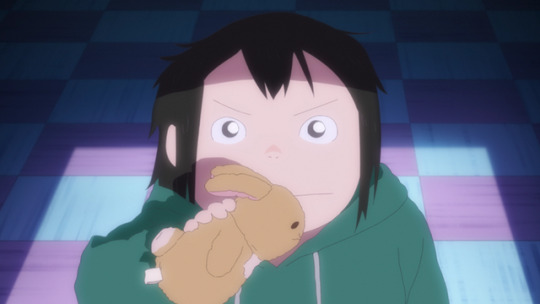
In any other time, I would have chosen Beastars as the Anime of the Year winner (see my praise above). But this hasn't been any other year. It's been quite a terrible one, to be honest. But in some sort of cosmic irony, Keep Your Hands Off Eizouken! started 2020 as one of the most optimistic and deep-hearted series I've ever seen.
A lot of people pitch Eizouken as an anime about making anime. I agree, to an extent. Anime seems to be the surface for the themes the show is playing with, as it's far more a series about the creative process and the imaginative fuel artists use when molding their ideas into something tangible. It's also about the interpersonal relationships of those creatives and how people can create community and teams around their strengths and weaknesses. It's also about how tiring and expensive it is to make one of these things! Truly, it takes a village. Eizouken grabbed a lot of anime fans' attention early last year, particularly those who enjoy these sorts of explorations of the artistic mind. My former editor and good friend Zac Bertschy was one of them and wrote the episode reviews for Eizouken every week. Each time I read one of his articles, that passion and enthusiasm lept off the page. And let me tell you, when Zac was passionate about something, he'd let you know. His thoughts and takeaways were genuine to an extent I hadn't seen in a while. This series truly was something special to him. Zac's passing still hurts, and seeing Eizouken's nomination continues to remind me of what was not so long ago. But seeing it nominated in the first place gives me confidence that anime fans around the world also saw that passion Masaaki Yuasa and Science Saru were presenting. Seeing Eizouken take a big win would be a triumph for the art and artistry we all love so much, as well as an exemplary showcase of the drive that truly makes this stuff magical. Jonathan Clements ended his book Anime: A History with a line I've been thinking about recently: "... the future of anime as an art form, and as a thing of enduring value, still rests as it did at the time of its inception, in the hands of artists and artisans with vision." I truly believe Eizouken is a celebration of that ethos. And for that, I hope it wins Anime of the Year.
Anyway, as always, waitin' for the big one when I'm 5/5 on these predictions.
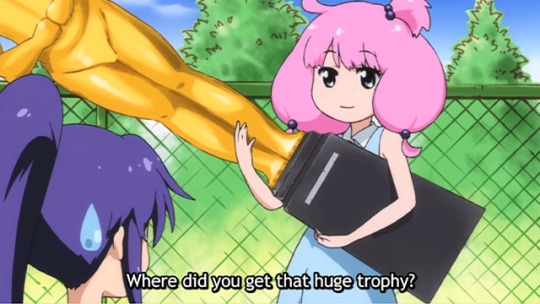

Kyle Cardine is an Associate Editor for Crunchyroll. You can find his Twitter here!
By: Kyle Cardine
0 notes
Text
How Black Mirror Embraced Its Horror Potential with Playtest
https://ift.tt/31rDHKg
Monster specialist Grant Walker of award-winning VFX studio Framestore was excited when he received an offer to work on an episode of sci-fi anthology Black Mirror’s third season. But the nature of the job, for an episode called “Playtest”, proved to be an unexpected one.
“I thought: ‘they want to make monsters for Black Mirror? I don’t get it,’” Walker says.
Through two seasons and six episodes on Channel 4, the monsters of Black Mirror were largely metaphorical and unseen, signals and dispatches from mobile devices in a dubiously fictional world. Then the show was picked up by Netflix, which quickly commissioned a six-episode third season. Among those six episodes was “Playtest,” an hour starring Wyatt Russell (Lodge 49), Wunmi Mosaku (Lovecraft Country), and Hannah John-Kamen (Ant-Man and the Wasp). When that episode premiered on Oct. 21, 2016 it looked quite different from any other Black Mirror installment before it.
In “Playtest,” the monsters of Black Mirror became literal with a grotesque human-spider hybrid and a shrieking flayed-faced zombie terrorizing Russell’s character Cooper Redfield as he playests the latest virtual reality videogame from a legendary game studio SaitoGemu. Though it all may be happening in Cooper’s head, the monsters created by Framestore are no less real to the viewer. That makes “Playtest” something truly unique in the Black Mirror canon. This is the one installment of the show’s 22’s entries that is undeniably, unapologetically horror. And four years to the day after its premiere, it still stands tall in the Black Mirror canon among the creative individuals who crafted it.
“I wasn’t expecting to do it. Then it just kind of just snuck in there, and it ended up being the highlight of my year,” Walker says of his BAFTA-nominated work on the episode.
“Playtest” director Dan Trachtenberg came to the project directly after the release of his film debut, thriller 10 Cloverfield Lane. Like Walker, he was pleasantly surprised that Black Mirror was set to expand its genre influences.
“I remember that was the big draw for Charlie (Brooker). He was really excited about making essentially Evil Dead 2. And I was excited to continue to do that kind of work and I felt like I was sharpening a tool that I hadn’t yet fully sharpened,” Trachtenberg says.
Trachtenberg and creator Charlie Brooker bonded over a shared love of both horror and videogames and quickly got to work fine-tuning Brooker’s concept into a lean horror machine.
“What evolved the most was probably Wyatt Russell’s character,” Trachtenberg says. “Initially, the character was much more of an ugly American. There’s still that quality to him, but there’s a lovability and a naivete to Wyatt’s performance that informs the gravity of some of the things that he’s dealing with. In initial drafts, it was more like one of the horror movie terms of the unlikable person who is put through a gauntlet to learn to have values.”
The first third of “Playtest” serves to set up the improbable circumstances that would lead a young American man to a creepy manor in the British countryside to playtest a VR horror videogame from a Japanese gaming giant. It all starts with Cooper out on a sprawling world tour, traveling to India, Dubai, Spain, and more before arriving in London at the tail end of his journey. When it’s time to finally return home, Cooper discovers that his bank account has been hacked and he’s unable to buy a return plane ticket. Thankfully SaitoGemu is in London working on its latest horror game and it’s willing to pay for some willing playtesters. That’s how Cooper makes his way to the opulent and spooky Harlech House where lead designer Shou (Ken Yamamura) and the team are hard at work creating the next great VR horror adventure.
If this seems like a lot of exposition before Cooper engages with the horrors of the haunted mansion, there’s a method to Black Mirror’s madness. Much of what Cooper experiences prior to entering Harlech House informs the horrors that he sees. One prominent example includes Cooper watching a movie on his flight about a monstrous spider and then encountering a terrifying spider of his own later on. There’s also a poster for Red Sonja, which foreshadows the moment that a specter of Cooper’s sex buddy Sonja (Hannah John-Kamen) enters the simulation and has her face torn off, revealing the crimson skull beneath.
“When (Cooper) kills that evil Sonja and slams her head onto the knife and through his shoulder that is (the position that) they woke up that morning. It’s kind of like in dreams, the way things are affecting you while you’re sleeping and then they show up later inside what you’re imagining,” Trachtenberg says.
The rest of “Playtest’s” dream sequences are positively bursting with similar dream imagery and Easter eggs that fans have done an excellent job of documenting over the years. Trachtenberg is fond of some of the subtler ones.
“There’s a typical, classic creepy girl in the painting in a creepy house, and the girl in the painting is the girl that he’s sitting next to in the airplane in the beginning. Everything you see in act one populates in act two and three,” the director says.
Once the horrors of “Playtest” get going, however, there is nothing subtle about them. And that’s where Framestore’s work comes in. Walker and his team were charged not only with creating a small, realistic spider that sets off the hallucination, but also a monstrous version with the human visage of his childhood bully Josh Peters.
“I played around with quite a lot of different iterations of where to put the face, and how to change the anatomy of the spider and the body,” Walker says. “The mandible things, they were coming out of his mouth at one point, and then they returned into part of his mouth opened up in the way that it does. I don’t know if people notice it or not, but those legs are hands with long nails. They’re like fingers. It’s got a belly button underneath it and other weird stuff that you might not ever get to see.”
The undead version of Sonja was a combination of practical and visual effects, with Walker’s team serving to make the terrifying red skull “gooier” for the most part.
“That was a tricky one. It was one of those ones when you spend a lot of time actually just massaging the integration so it feels tangible as opposed to kind of making this standalone thing and investing time in an amazing asset. She wasn’t quite so shiny, so we built our own CG version, and some shots were CG and layered on the top.”
The effects for Spider-Peters and Red Sonja had to be particularly on point as they are a product of Cooper’s brain and not merely SaitoGemu’s VR technology. As attentive viewers of Black Mirror know, “Playtest” actually “ends” roughly 20 minutes in when Cooper receives a phone call from his mom in the secure playtest area. The signal from his phone, which was supposed to be off and secured in a suitcase, fries the “mushroom’s” connection to Cooper’s brain and kills him almost instantly. Everything that follows is the product of his dying brain and not the work of SaitoGemu’s machine. This information, of course, isn’t revealed until episode’s end and as such Brooker maintains that it’s one of the most misunderstood endings in Black Mirror history.
“If there’s misunderstandings of it, I’m probably to blame, which may be why Charlie is cleaning it up,” Trachtenberg jokes. “But frankly, every reaction video that I’ve watched I feel like people usually do get it. There’s even a clip where someone put what actually happened, where they cut out the entire second that they just show that scene as if that’s all that happened, which is fun to watch.”
Read more
TV
Black Mirror: Ranking Every Episode
By Alec Bojalad
The best episodes of Black Mirror are never about how technology will torment humanity. They’re about how humanity will use new technology to continue to torment ourselves. And nowhere is that more apparent than in “Playtest.” The episode sets up a scenario in which a VR experience will go haywire, but then in reality it is Cooper’s brain that betrays him, not the machine. It’s Cooper’s conscience that takes him on this terrifying freak show of monsters and murderers and then dies before the game even begins. It’s the proverbial “flashes before your eyes” moment in which that flash is a literal horror movie.
“I do find it interesting how devastating that notion is for so many – that it could all happen in a split second,” Trachtenberg says. “We definitely went back and forth so much on the ending. And I certainly don’t love too many twists as well, I just felt the initial twist was the expected one and I wanted there to be something more. I really wanted to drive home that it’s his fault in the end and tie in the fear of inheriting what his father had.”
Though the monsters of “Playtest” offer up the biggest scares, it’s approach to horror is deeper, more existential. Cooper’s real biggest fear is forgetting who he is, just like his father did before his end. And the mechanism that ultimately kills him isn’t any malevolent entity within the game or SaitoGemu, it’s simply his inability to connect with his mother during a difficult time in their lives.
Cooper is quite the keen observer of his surroundings in Harlech House, despite being dead. During one moment in particular, Cooper opens up a cupboard door to find a bottle of (non-alcoholic) wine and before he closes the cabinet he says aloud to his handler Katie (Mosaku) “He’s going to be right behind this door when I close it, isn’t he?” referring to the shade of Josh Peters. And of course, Cooper is right – just a little delayed, as the spider version of Peters that launches itself across the kitchen shortly after he closes the cabinet.
Characters in horror movies being self-aware about the “rules” of horror is nothing new in our highly metatextual pop culture landscape. But identifying the “cupboard” rule is still quite impressive. According to Trachtenberg, acknowledging the legacy and tactics of horror is an important part of any horror enterprise.
“There’s a scene in I Know What You Did Last Summer with these two characters talking in a car. The frame they’re on is the extreme side, and the entire other two-thirds of the frame of negative space is the window; and you just know that someone or something is going to jump inside that part of the frame. It’s about riding the wave of tension then releasing it. (With the cupboard scare) the audience has the sensation of, ‘Uh-oh, it’s going to happen here?’ Then Cooper calls it out and the audience thinks, “Oh there. That’s what it is.’ Now that they’re not expecting it, we can actually still surprise.”
“Playtest” could have been a lot more meta than just as a mere horror critique. At one point, Brooker planned to have a “Nightmare Mode” version of the episode available on Netflix’s streams, in which viewers could revisit it and get a new horror experience. If that sounds like the choose-your-own adventure nature of the eventual special Black Mirror: Bandersnatch, it’s because it is … right down to the focus on videogames.
Trachtenberg says Netflix wasn’t ready to take on the technological burden of such a concept in 2016.
“Charlie is a huge gamer, as am I. We talked a lot about, ‘wouldn’t it be awesome if we could pull off alternate endings or an alternate beat, or could there be connections to other episodes that you only see if you clicked on this button or whatever. I think he really tried with Netflix at that moment and there just was no technology for it.”
Being on the bleeding edge was something of a trend for “Playtest.” Many Black Mirror episodes are known for their uncanny predictive abilities (right down to the truly insane real life rumor of a British Prime Minister allegedly sexually defiling a pig). “Playtest,” meanwhile, preceded a run of truly excellent horror games (including one literally called “P.T.” for “Playtest”) and a modest increase in the popularity of VR technology. But four years on from the episode, Trachtenberg doesn’t feel as though culture is fully embracing the tech’s potential.
“VR was around when we were shooting. And it’s gotten much better since but I think we all felt like AR was definitely going to take over. I still feel that eventually. You just have to try it to know how amazing it is. But still … I would have thought that would have taken over sooner.”
cnx.cmd.push(function() { cnx({ playerId: "106e33c0-3911-473c-b599-b1426db57530", }).render("0270c398a82f44f49c23c16122516796"); });
Perhaps that’s the real legacy of “Playtest.” It’s the one episode of Black Mirror that wasn’t cynical enough about our reliance on technology…despite killing its lead character with a phone 20 minutes in.
The post How Black Mirror Embraced Its Horror Potential with Playtest appeared first on Den of Geek.
from Den of Geek https://ift.tt/3jiM2pI
0 notes
Text
Smokey brand Movie Reviews: Bad Iliad
A friend of mine got into it about the various interpretations of the Medusa myth and it got me going about Greek Mythology. I love me some mythology but my first love was the Greek myths. They’re just so ridiculous and petty and tragic and fun. These things read like old timey comic books with the best villains and human heroes. Medusa a is one of my favorite characters and it’s all thanks to The Clash of the Titans. I saw that old movie way back when i was a wee sprout. It was during my Ray Harryhausen phase and fueled my love for claymation. His work, just like the original Clash, left a distinct impression on me and I've studied all things Greek myth since. When the remake was announced, i was pretty hyped but i never actually sat down to watch the whole thing all the way through, only bits and pieces. I missed it in theaters because the 3D transition ruined the movie and tainting the experience. When it was released to to home video, i skipped it because of all the bad word-of-mouth. Apparently, the remake is on Netflix so, after reminiscing about my love for the ancient myths, I've decided to actually watch this thing all the way through.
The Good
The look of this movie is outstanding. The sets, the costumes, the build of the world were all exceptional. You can tell they used every bit of that massive budget to do the original film justice. This thing s super easy on the eyes.
I really like the updated monster designs, specifically the Kraken and Medusa. Those Furies, then scorpions, and even the Pegasuses; All of them awesomely reinterpreted. The sheer scope of that climactic battle between Perseus and the Kraken was so f*cking epic and Medusa’s whole scene was beautifully tragic. I loved every bit of that sh*t. Also, Calibos was pretty okay in this thing, too. i prefer the old goat-like one but i ain’t mad at this version at all.
This cast is dumb stacked. Sam Worthington, Mads Mikkelson, Gemma Arterton, Liam Neeson, Ralph Fiennes, Luke Evans, Natalia Vodianova, and Kaya Scodelario all make an appearance. Even Nicholas Hoult is in this thing somewhere. Dope ensemble is dope and i enjoyed mostly everyone, specifically Mads and Neeson. These cats chewed all of the scenery whenever they were on screen.
I have to say, the pacing in this flick is pretty nimble. They got from scene to scene rather swiftly without losing too much story in between. I appreciated that as, i mean, this thing ain’t one for the intellectual. You aren’t puzzling on the underlying themes of this narrative any time soon so the fact that this flick gets you from set piece to set piece as briskly as possible, is a real positive.
The Bad
The editing in this thing is kind of terrible, man. It has a problem with that early 10s, shaky cam, jump cut nonsense that’s supposed to convey intensity but just f*cking obscures whatever is going on in the movie. Your movie can be as beautiful as the stars and your action set piece as epic as anything from Terminator 2, but if you can’t see any of it, what the f*ck is the point?
The writing in this thing is dumb as rocks. The changes made to the plot did not make for a better narrative and a lot of the dialogue is corny as f*ck. The original ain’t winning any awards for it’s narrative but it feels far more coherent than this version of the story.
Way too much exposition. This, i think, is a problem that stems from the pour writing. There isn’t any organic way to expound the necessary information outside of having f*cking Io explain literally everything. This movie constantly breaks the cardinal rule of film making by telling the audience everything instead of showing it to us.
The performances weren’t great but that, again, stems from the fact that the writing is so goddamn weak. It’s really, really, hard to get into this click when everything is so goddamn mundane. This is a movie about man fighting gods, riddled with massive creatures and tragic monsters. This thing should be mad epic but it feels so goddamn small.
Bro, the plot holes. They weren’t super egregious like other films, i didn’t feel insulted watching this sh*t, but it definitely left a bad taste in my mouth by the time the credits began to roll.
While i loved the fact that Ralph Fiennes is in this doing his Ralph Fiennes thing, the switch t make Hades the main antagonist and not Thetis effectively ruins the entire story. The best Greek myths are when the gods are just petty assholes toward each other and humans get caught in the crossfire. The original understood this and literally portrayed us a playthings to be manipulated with that pretty on the nose, clay figure imagery. This flick ain’t that and i think it suffers for it.
Kind of in the same vein, the lack of Calibos was very apparent. The decision to move away from him as the main foil to Perseus kind of f*cked up the flow of the story. I wasn’t mad at the change in how the character was represented but there should have been more, direct, interaction between Perseus and Calibos, like in the original. In that one, he felt like a force, like threat. In this one, dude is just fodder and scene filler. Missed opportunity, for sure.
The whole Prokopion subplot was entirely unnecessary. Why was this dude even in the movie? It’s an interesting idea, sure, but there wasn’t anywhere near enough time to explore or develop that aspect of the film. Save that sh*t for a sequel. It would probably make fir a much richer narrative that what we actually got.
A bald eagle, my dude? Word?
The Verdict
This is a bad movie, man. It’s not the worst thing I've ever seen but i can’t say i was continuously entertained. To be honest, i was bored fro probably the first ten or fifteen minutes. It’s really pretty, though, and has some dope ass effects. The Kraken climax and that Medusa set piece was gorgeous to see and i really like this cast but there is no substance to this film. None. The actual story is little more than a skeleton to hang big-budget, CG effects, on to it and that’s fine. I can get behind vapid nonsense from time to time. I mean, i actually like the first Bayformers movie before they got really insulting. I might be giving this thing a harder time than it deserves but that’s because I've seen this movie done better. I’ve seen this story told better. I’ve seen this film executed better and it was done thirty years before this one came out. The 1981 version of this click is superior in every way with the exception of effects. That’s it. If i had to choose between the two versions, I'd definitely watch that one first however, the 2010 remake isn’t that horrible. There is merit to this version of the narrative and it’s definitely one of the more beautiful films out there. If you have an hour and change left, I'd suggest checking out the Clash of the Titans remake.

0 notes
Text

At age 14, Hal Newhouser, then a fast-pitch softball player, decided to try his hand at throwing a baseball, with aspirations to one day pitch for the hometown Tigers. It would turn out to be a great decision: the lanky teenager, featuring a blazing fastball and devasting overhand curve, posted a 42-3 record in American Legion play over the next three years. The youngster soon caught the attention of Tigers' scout Wish Egan, who signed him for $500 (unbeknownst to Newhouser, the Indians were prepared to offer him a $15,000 bonus). "Today I’ve just signed the greatest left-handed pitcher I ever saw," declared an ecstatic Egan. The Tigers certainly got lucky that day: over 15 seasons in Detroit, Newhouser would win 200 games and a pair of MVP awards. The 6-foot-2 inch, 180-pounder dominated the 1940s, leading MLB in wins (170), CGs (181), and strikeouts (1,579) during the decade.
Newhouser's career began with a bang, as he fanned 18 batters in his first minor league start, though his wildness and emotional outbursts left doubts about his viability as a big leaguer. ("Hurricane Hal" was known to throw clubhouse tantrums following losses.) The youngster's MLB career got off to a mediocre start: he went 18-20 with a 4.83 ERA over the 1940-41 seasons. Classified as 4-F due to a heart defect, Newhouser (he hoped to be a pilot) combined for 16 wins and a 2.75 ERA over the next two years. "Prince Hal"—having developed a slider to go along with his fastball, curve, and change-up—went 29-9 with a 2.22 ERA and an AL-best 187 Ks in 1944, winning his first of two consecutive AL MVP awards. In 1945, he went 25-9 while pacing the AL in ERA (1.81), CGs (29), shutouts (8), IP (313), and Ks (212).
The 25-year-old went 26-9 with a 1.94 ERA and a career-high 275 Ks in 1946, narrowly missing out on his third straight MVP award (his 26th win came against Bob Feller; Bill Veeck called it the "duel of the century"). Newhouser posted an AL-best 21 victories in 1948, his last big season. Plagued by shoulder pain, he won 48 games over the next five years (1949-53) before joining the Indians in 1954. Newhouser pitched brilliantly in Cleveland, going 7-2 with seven saves and a 2.51 ERA over 25 appearances out of the bullpen. The 34-year-old retired in 1955, finishing with a 207-150 record, 1,796 Ks and a 3.06 ERA. Ted Williams—he once recalled the time Newhouser "dusted me off, then struck me out on three pitches"—hated facing "Prince Hal," as evidenced by his .254/.391/.366 slash-line over 87 plate appearances versus the resolute lefty.
#vintage#history#mlb baseball#baseball history#vintage baseball#baseball#mlb hall of fame#mlb history#mlb
0 notes
Text
ALITA: BATTLE ANGEL: Ed’s Very Important Thoughts on the Robert Rodriguez Anime Adaptation
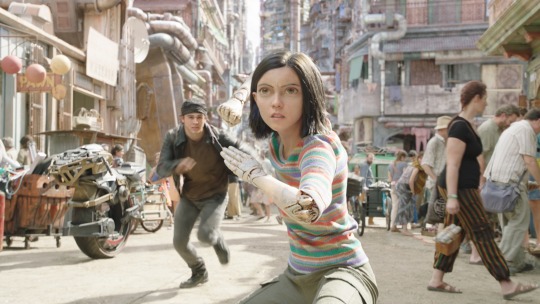
Before we get into my thoughts on the newest James Cameron-Jon Landau-Robert Rodriguez jam, let’s talk about science fiction. It’s a genre that has worked so well in novel form, as well as in comics and animation, but not always so much when it comes to live action films. You might wonder why that is, and it’s fairly simple: perception. A filmmaker’s vision of a futuristic world may or may not connect with how the viewer sees that world, especially when it comes to science fiction movie adapted from other forms.
That may be why you can watch a movie like Stanley Kubrick’s A Clockwork Orange (one of my lifelong personal faves) and accept the characters talking using strange, foreign slang (taken straight from the book, mind you) or enjoy the craziness of Luc Besson’s Valerian and the City of a Thousand Planets, while possibly not be in tune with visions of the future like those in Mortal Engines, Divergent, The Giver or any number of other future worlds.
That brings us to Alita: Battle Angel, a decades-long obsession of filmmaker James Cameron to adapt the popular Yukito Kishiro manga into a movie, although he is already well-entombed in making the next 500 Avatar movies, so he handed the directorial reigns to the equally able Robert Rodriguez.
If I’ve ever read any of the Battle Angel Alita manga, I don’t remember very much about it other than that it involved a cyborg girl who was REALLY good at fighting. Because of that, I probably wouldn’t know how well the film captures the story, characters or the environment. Even so, it’s not like there’s a ton of Manga adaptations to compare this to either, other than the disastrous Ghost in the Shell from a few years back and other ones that are equally bad.
Let’s see how much of the plot of this one I can share without making you just want to shut your mind off, as I nearly did while trying to endure this:
The movie takes place in the 26thCentury, 300 years after “The Fall,” a war that has created a post-apocalyptic world divided into two places – the Earth-based Iron City and the enormous city of Zalem, floating high overhead. A girl’s head falls from the latter down to a junkyard in Iron City where it’s found by Christoph Waltz’s Doctor Dyson Ido, a cybernetics expert who gives the girl a cyborg body he created for his late disabled daughter Alita. He gives the cyborg the name Alita (Rosa Salazar) and having no memory of her past, she looks at Iron City with a sense of wonder, especially when she meets the handsome Hugo (Keann Johnson), and they begin to bond. As others discover Alita’s existence, most notably the evil Vector (Mahershala Ali), she finds herself using her new skills and cyborg body to protect Hugo and Doctor Ido.
Obviously, there’s a lot more to the plot in terms of characters, and I couldn’t tell you which of them comes directly from the comics and which are made to look cool for the movie, but it’s surprisingly not too complicated a plot once you know all the players.
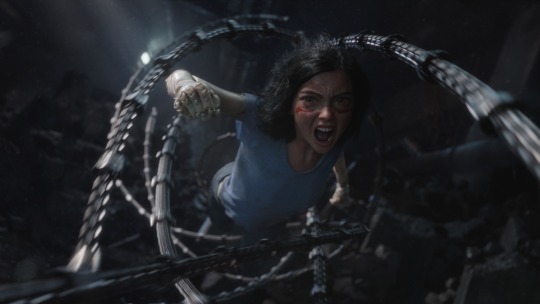
Christoph Waltz is surprisingly decent playing a kinder and gentler father figure, a bit like Geppetto to Alita’s Pinocchio, though he does get into the action, as he’s also a “Hunter-Warrior.” Mahershala Ali, on the other hand, gives such a stiff performance you may wonder if this movie will be his Norbit, the bad paying gig an Oscar-winning actor takes that comes out in the middle of awards season. (Then again, Jennifer Connolly is also pretty bad in this, and she’s also an Oscar winner.)
On top of that, Alita features another ridiculous performance by Ed Skrein, who I’m shocked still gets work despite being the worst aspect of Deadpool. He plays Zapan, the top Hunter-Warrior, a group of bounty hunters who seem to go after those who kill cyborgs for parts, whether they be human or cyborg themselves. You see, in Iron City, cyborg parts are a commodity with everyone clamoring for the best upgrades. Furthermore, everyone in Iron City has an exceedingly silly name to the point where when you’re introduced to the Hunter-Warriors “Screwhead” and “Dogmaster,” it’s almost impossible not to break out laughing.
Also big on this world is a sport called “Motorball.” Now if you were to ask me, “What sport is so popular in America that you can see it surviving until the 26thCentury?, I might tell you “baseball” or “football” or even “professional wrestling” – I would never have said, “roller derby.” That’s exactly what Motorball is, a form of futuristic roller derby involving cyborgs that the people of Iron City just eat up. Of course, Alita eventually joins up and is immediately targeted by the other cyborgs playing.
As silly as the film sometimes seems, everything is always delivered so seriously it’s hard to enjoy, and the cast in general is so lacking in the type of charm or personality that can make anyone other than Alita herself stand-out. If you think about some of cornier sci-fi movies like Total Recall or Robocop, what made them work is that you had charming or solid leads like Arnold Schwarzenegger or Peter Weller, and Rosa Salazar’s bright charm and big smile only goes so far. I also will freely admit watching a character with giant exaggerated eyes can be unnerving for at least the first hour. (I couldn’t decide which was creepier: Alita or the lady-dolls from Robert Zemeckis’ Welcome to Marwen.) Things get even skeevier when Alita’s body is replaced with that of an older woman and both her “maker/father” and Hugo make creepy comments about how much better she looks. Talk about a movie sending mixed messages when you have this powerful female character but the men around her still only admire her for physical attributes.
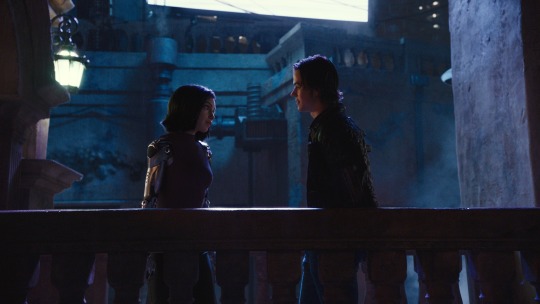
I don’t want to completely trash everything about Alita, because one place it excels is in the overall look of the movie (especially captivating in 3D) as well as in the action setpieces which are generally exciting and enjoyable despite the terrible dialogue that accompanies most of it. If you just want to watch cool stuff, there’s plenty of that as the film’s visuals are as impressive as anything in Blade Runner 2049 or other CG-heavy films. There’s no question Rodriguez and Cameron are masters at creating fully CG worlds populated entirely by CG characters and still making them easy to connect with.
That said, the weak writing and dialogue rarely help matters, leaving it relying heavily on the score by Thomas Holkenborg (aka Junkie XL) to inform the viewer how they should be feeling. As with Mortal Engines, you may wish there was a better movie to accompany his score, but even that seems to be far more earnest than necessary.
Even if the original manga was created way back in 1990, Alita winds up feeling derivative and filled with every cliché imaginable since it probably has inspired so many copycats. (I’m talking to you Elysium.)
As great as Alita might look, make no mistake that this is a very bad movie. I’m not even sure diehard fans of the Manga will be able to tolerate its constant stream of stoic silliness.
Rating: 5/10
0 notes